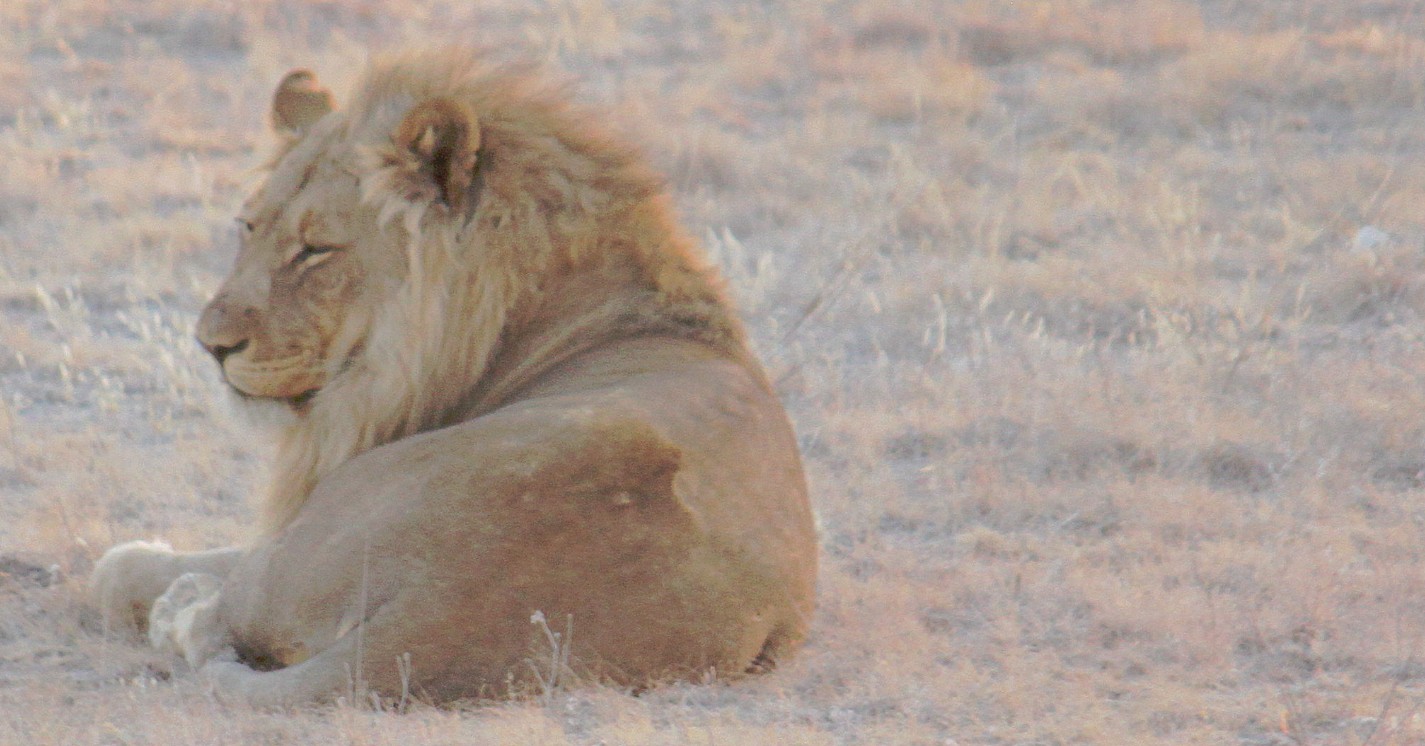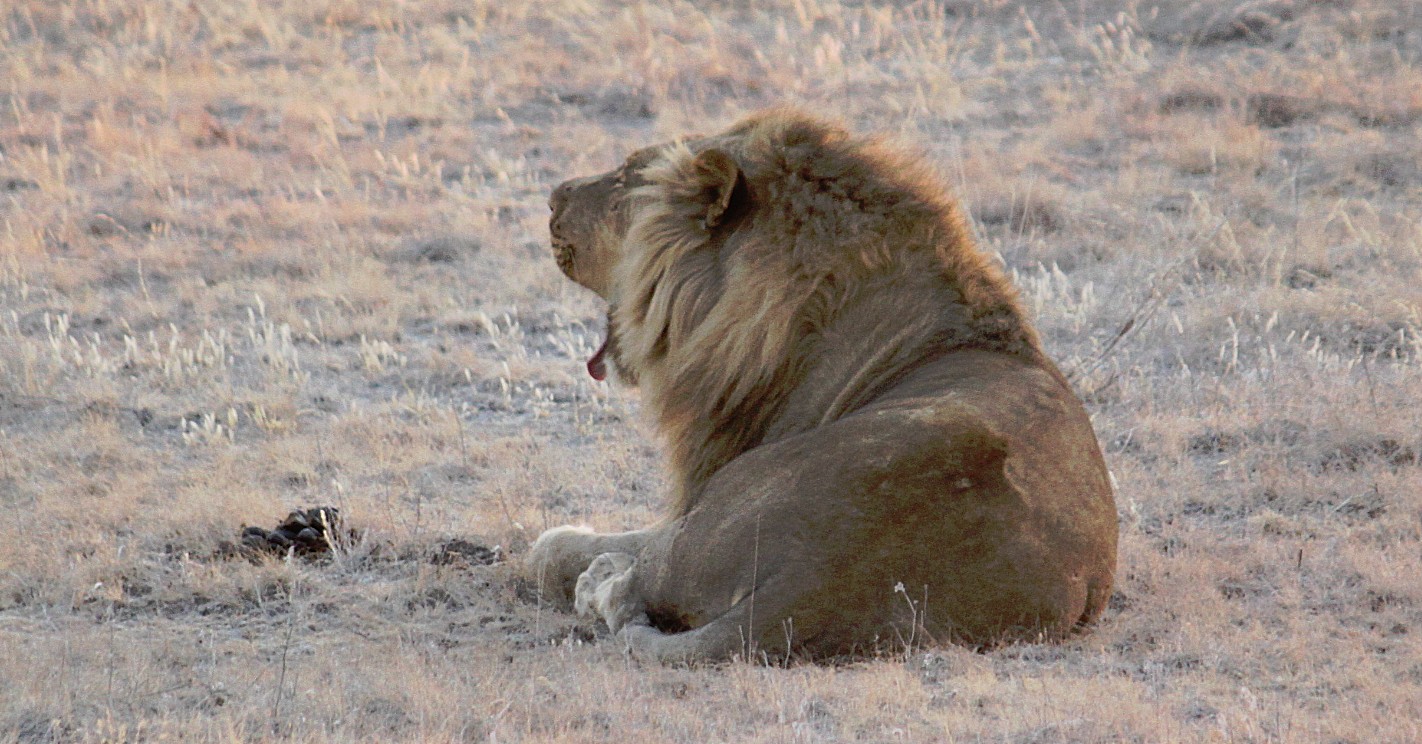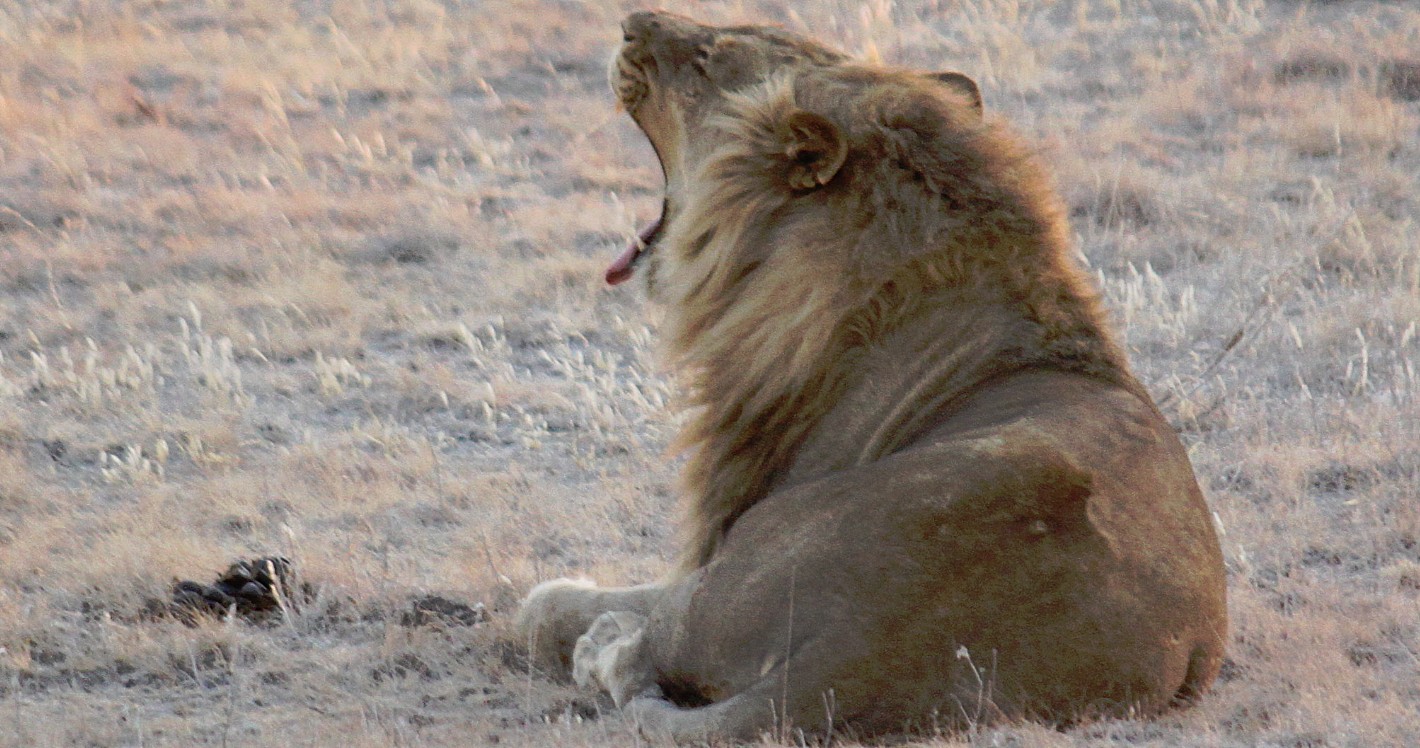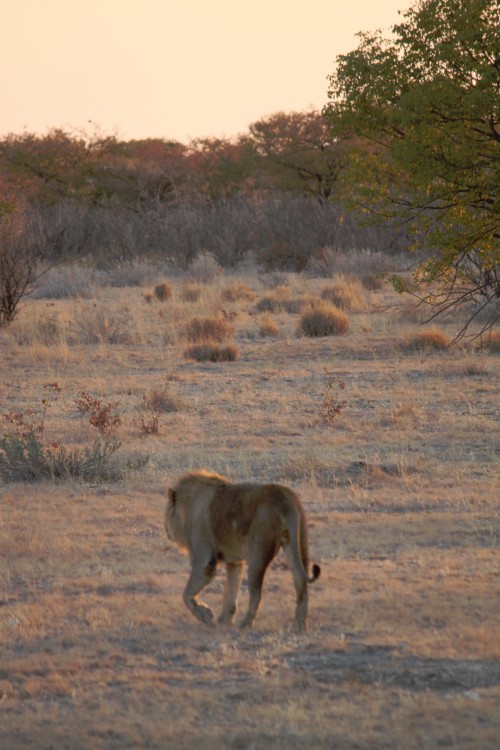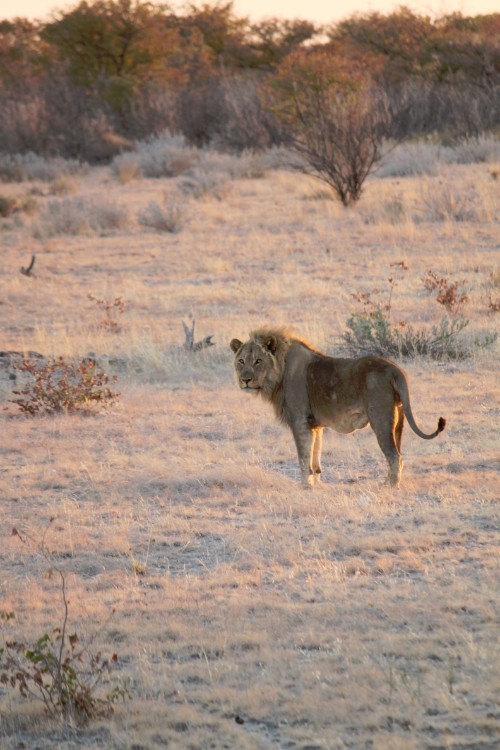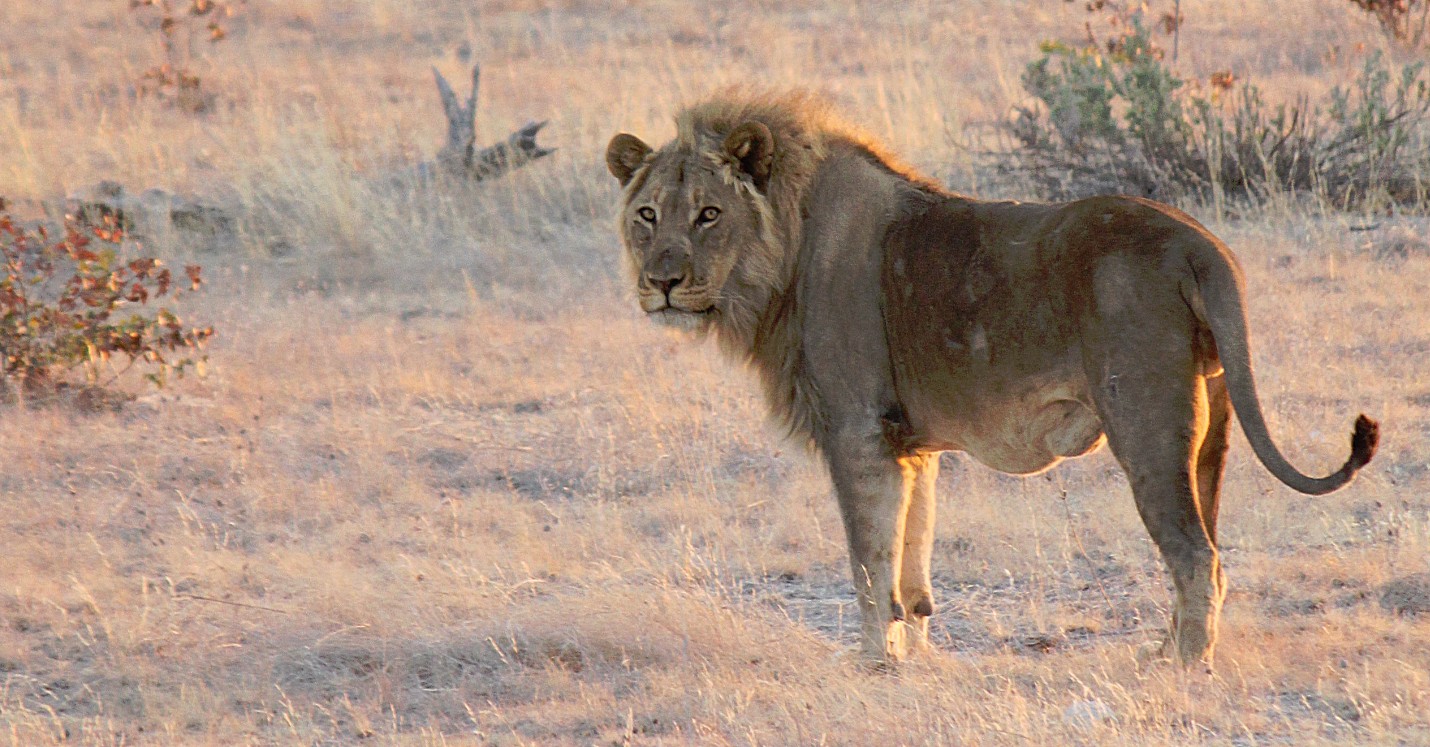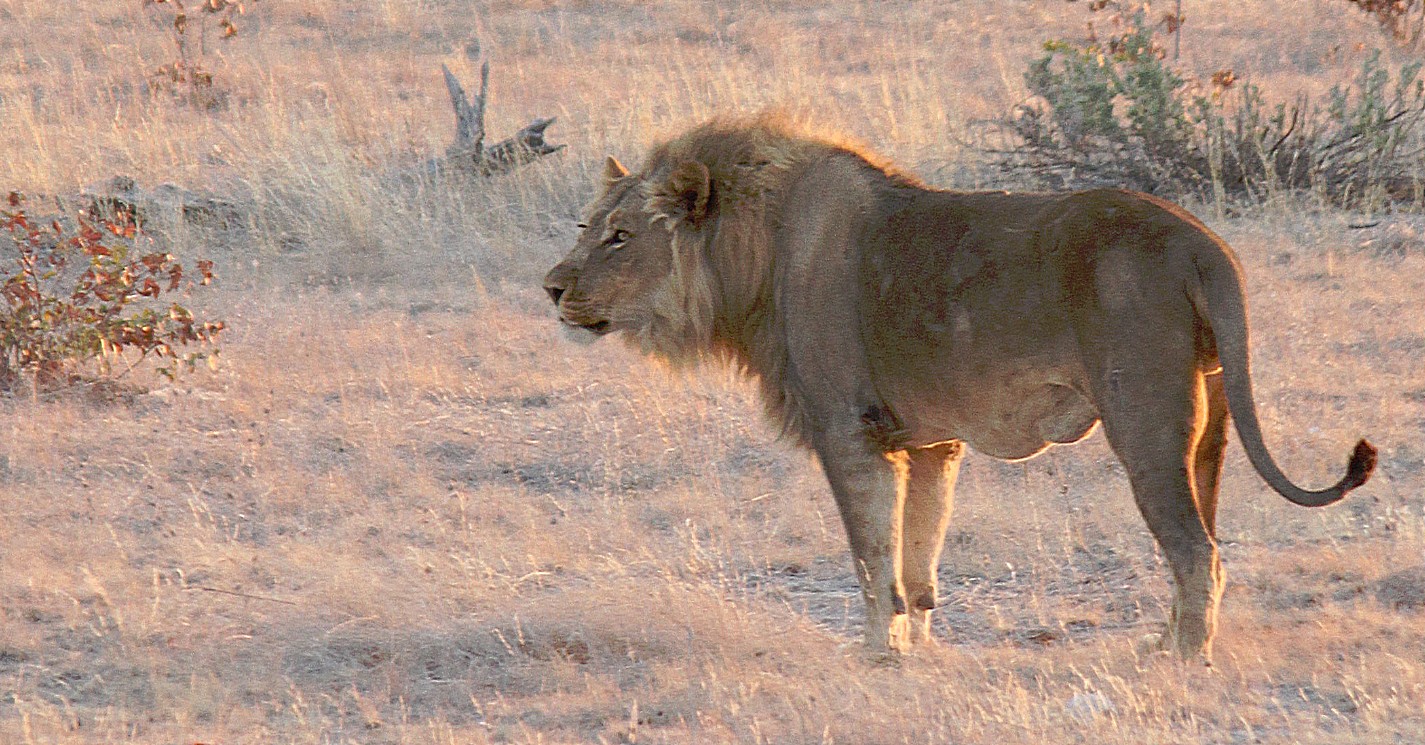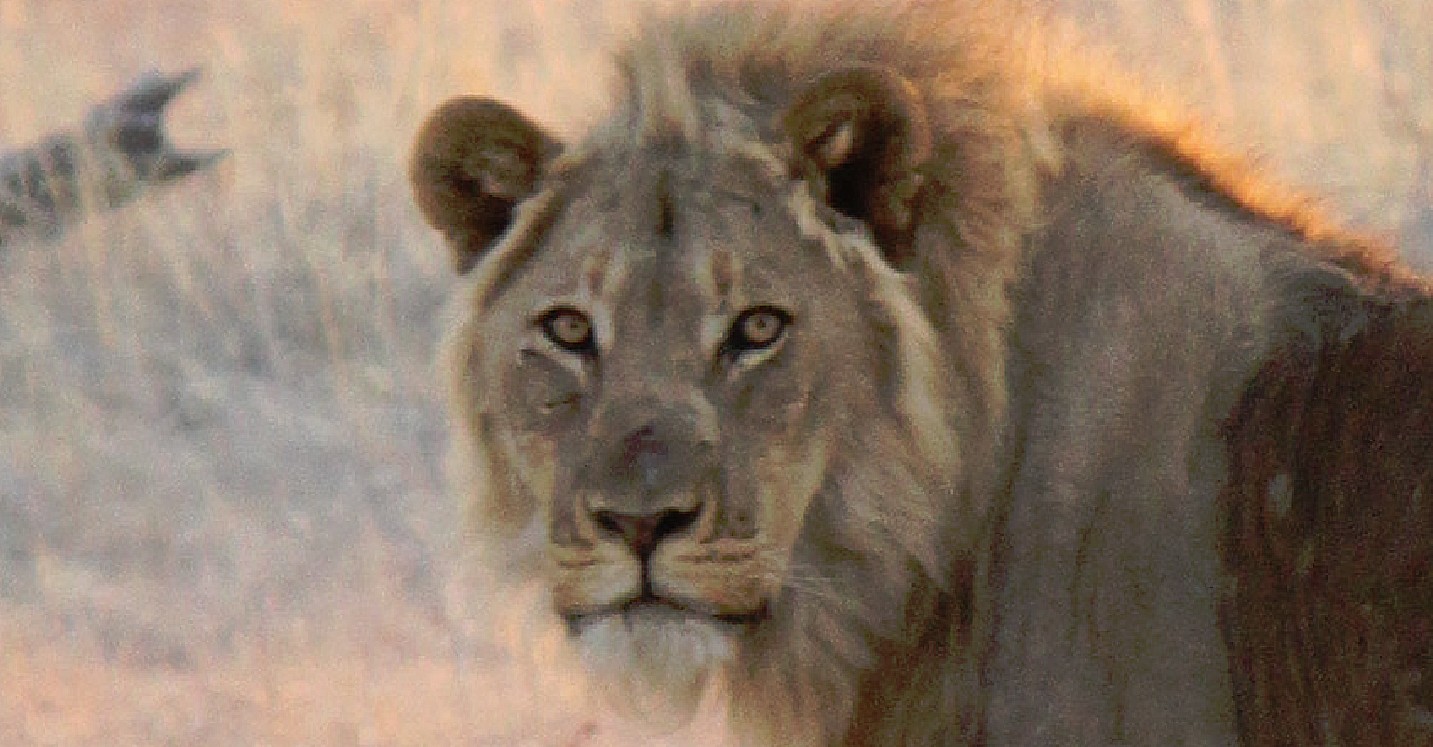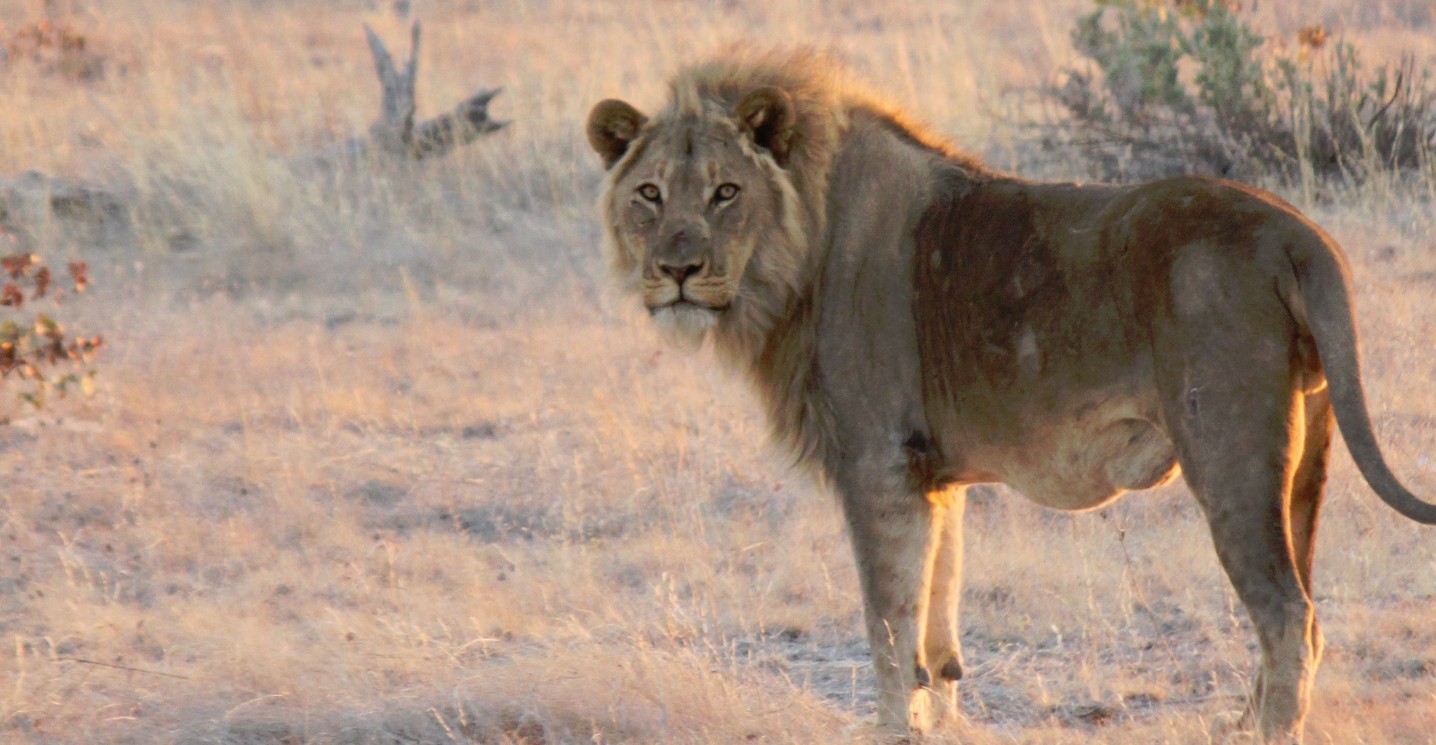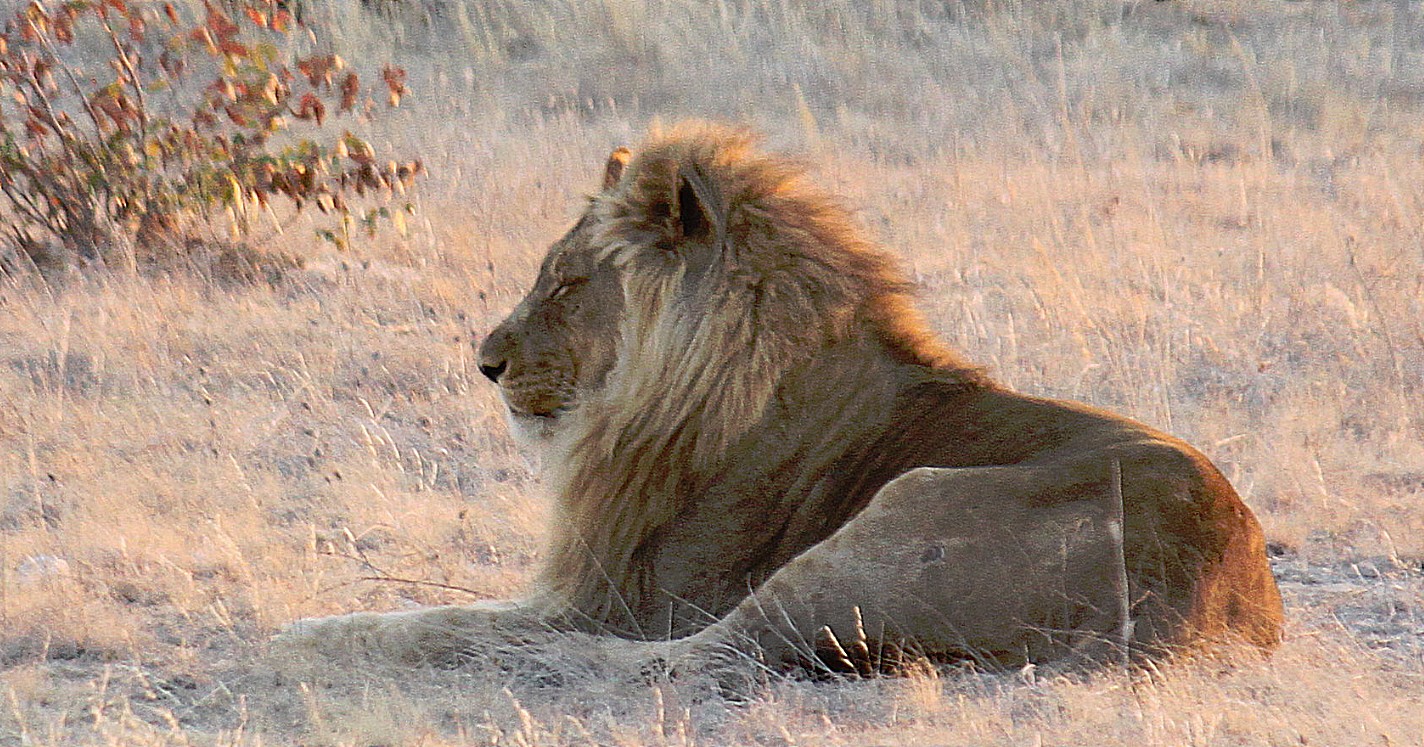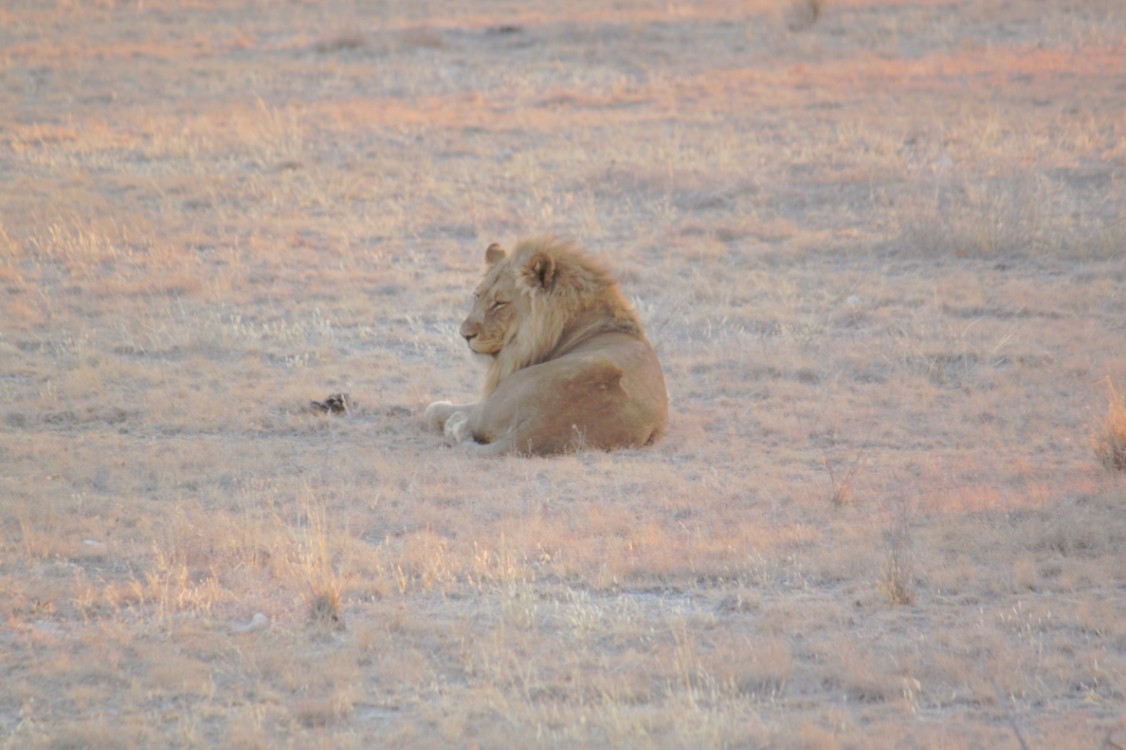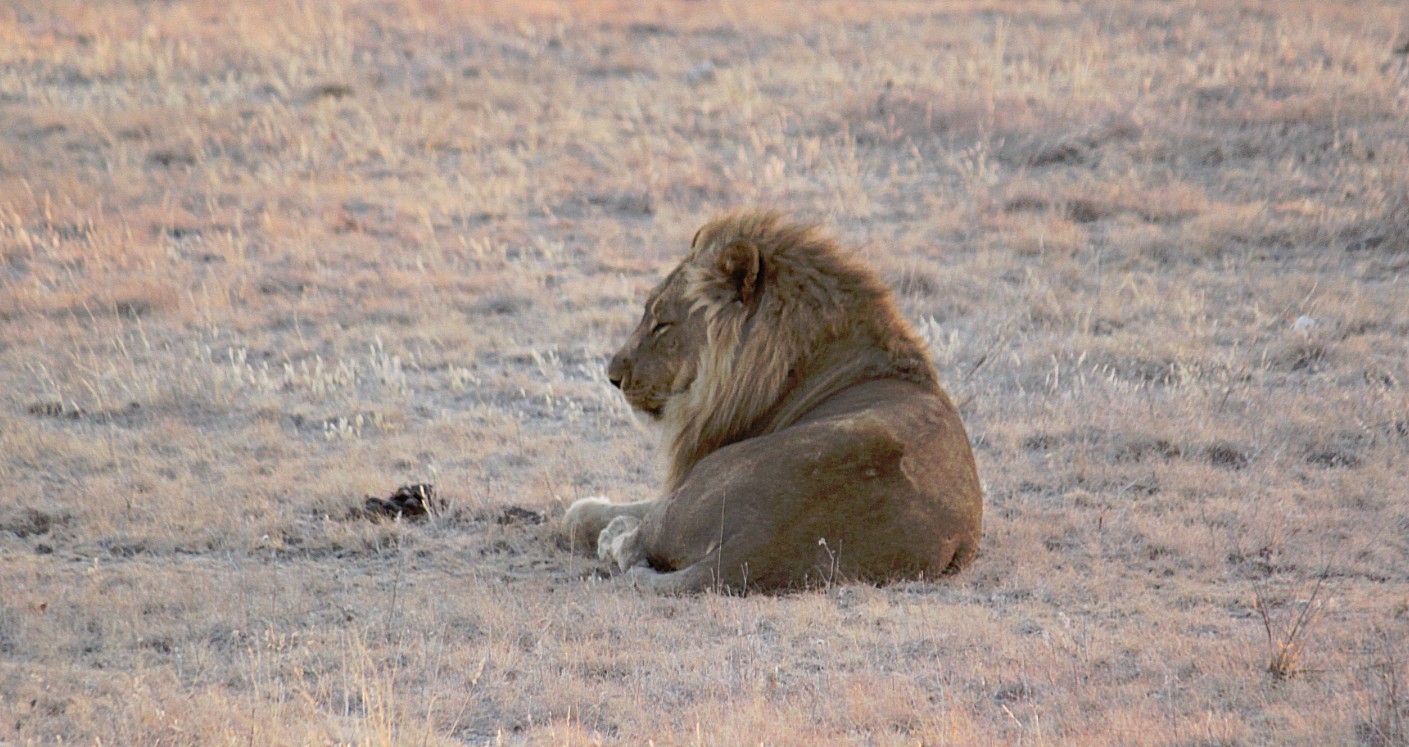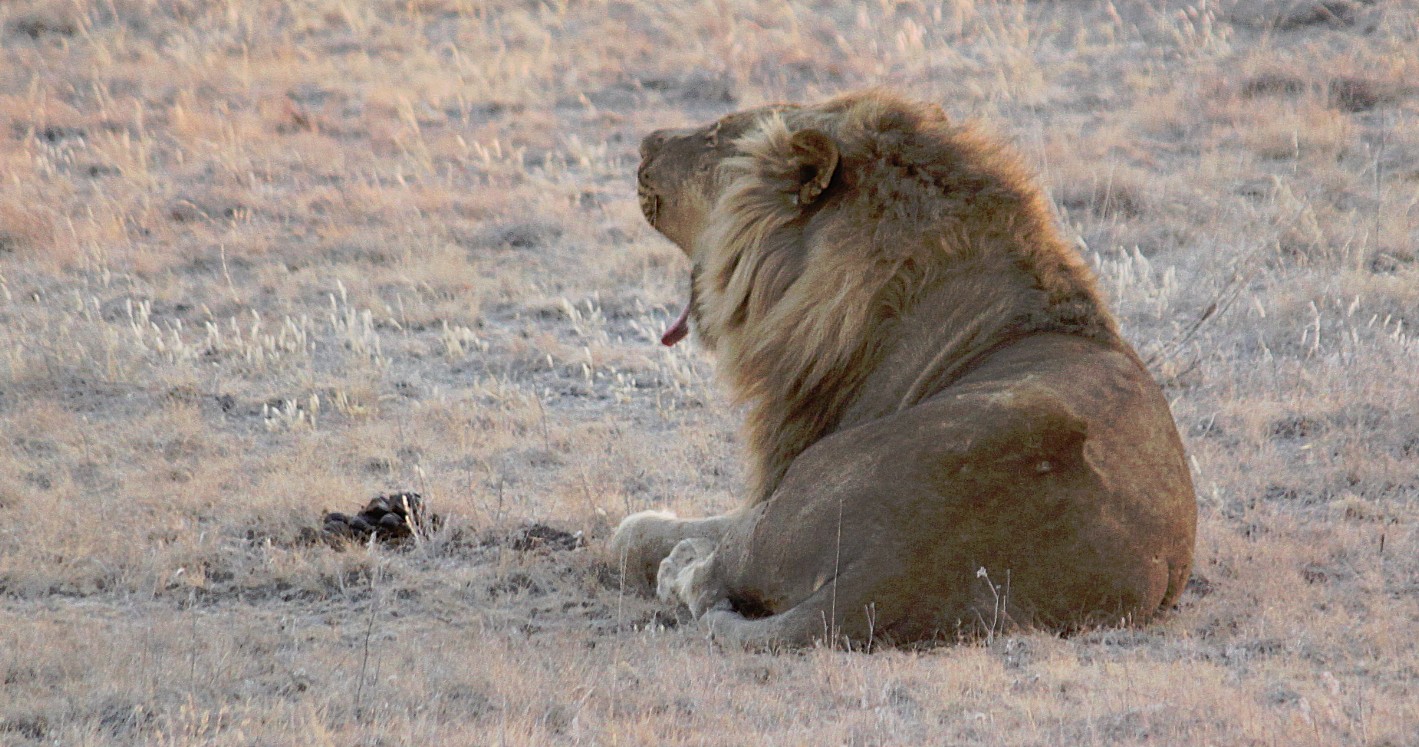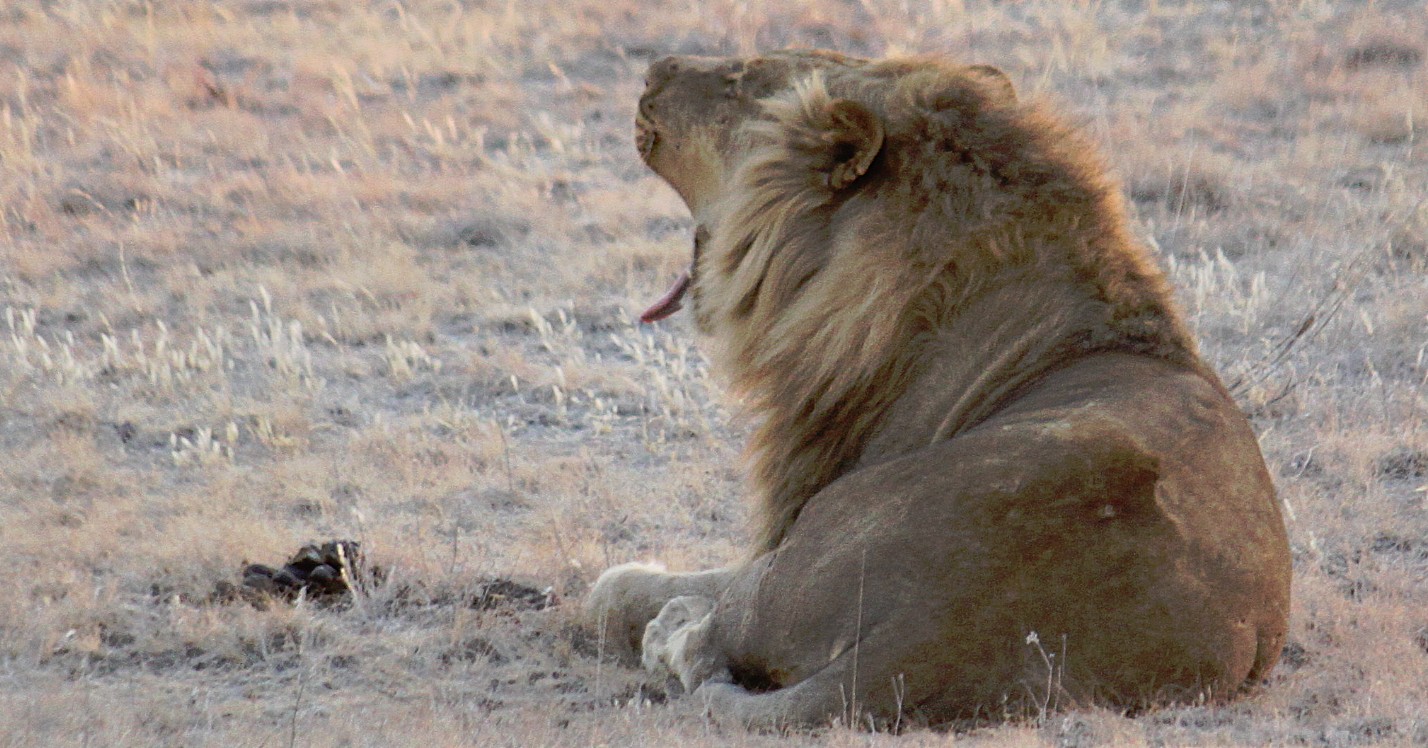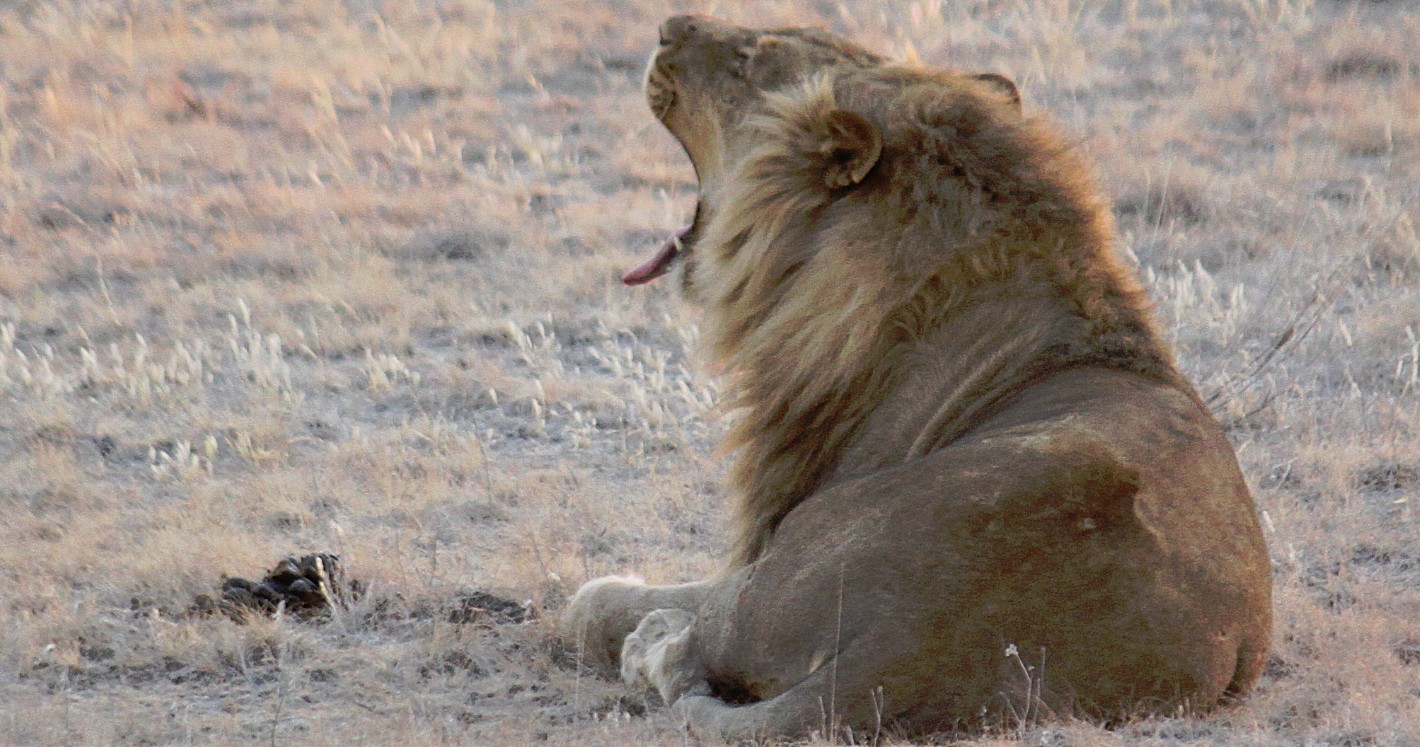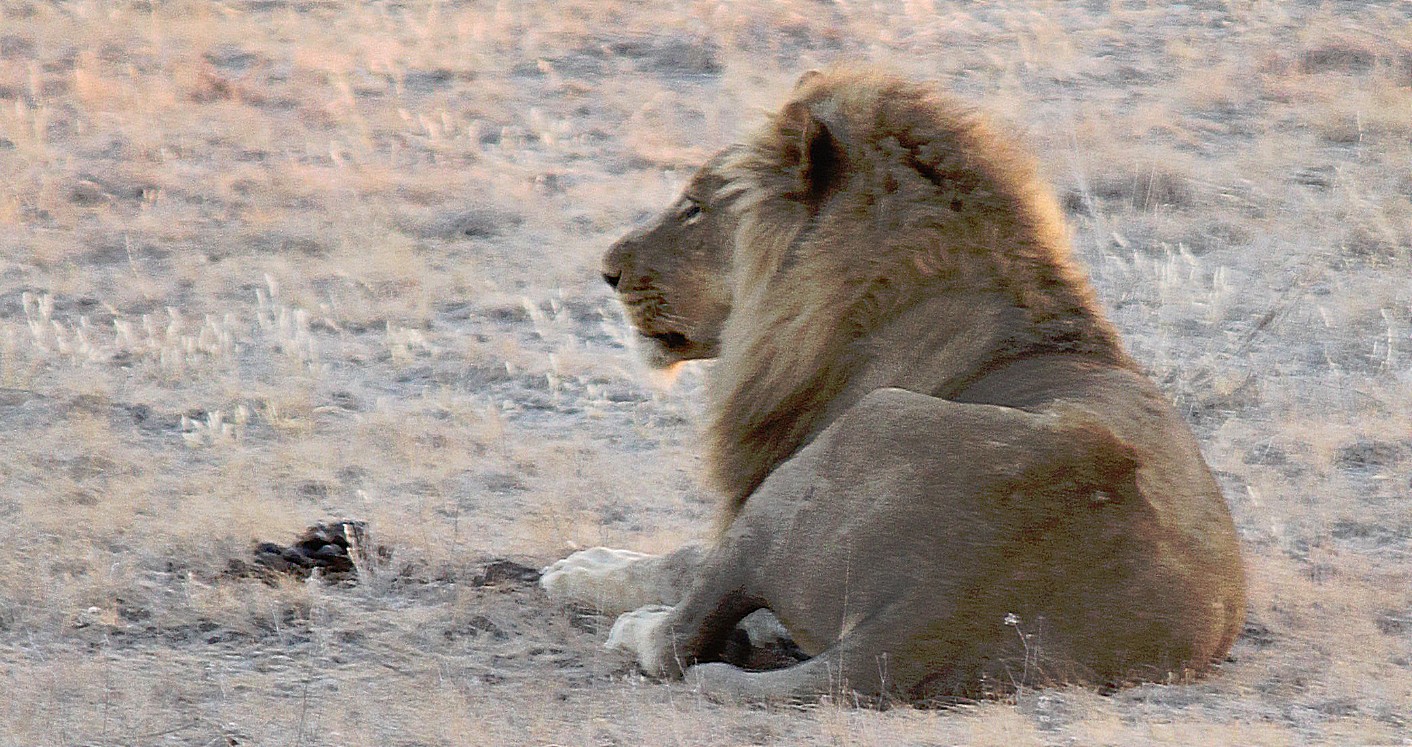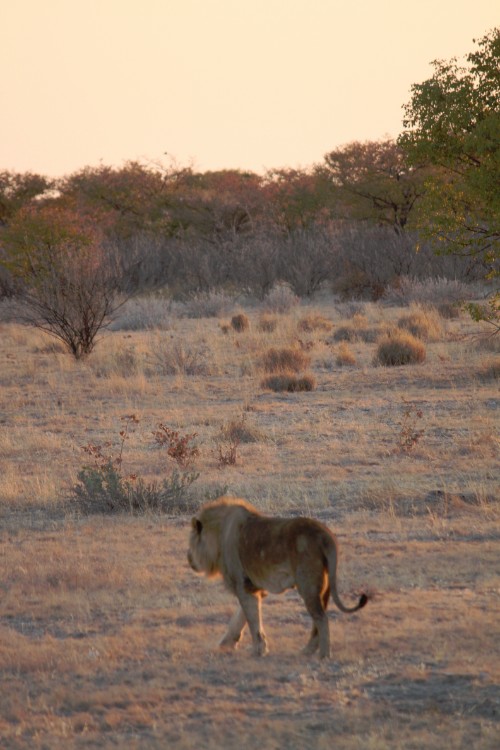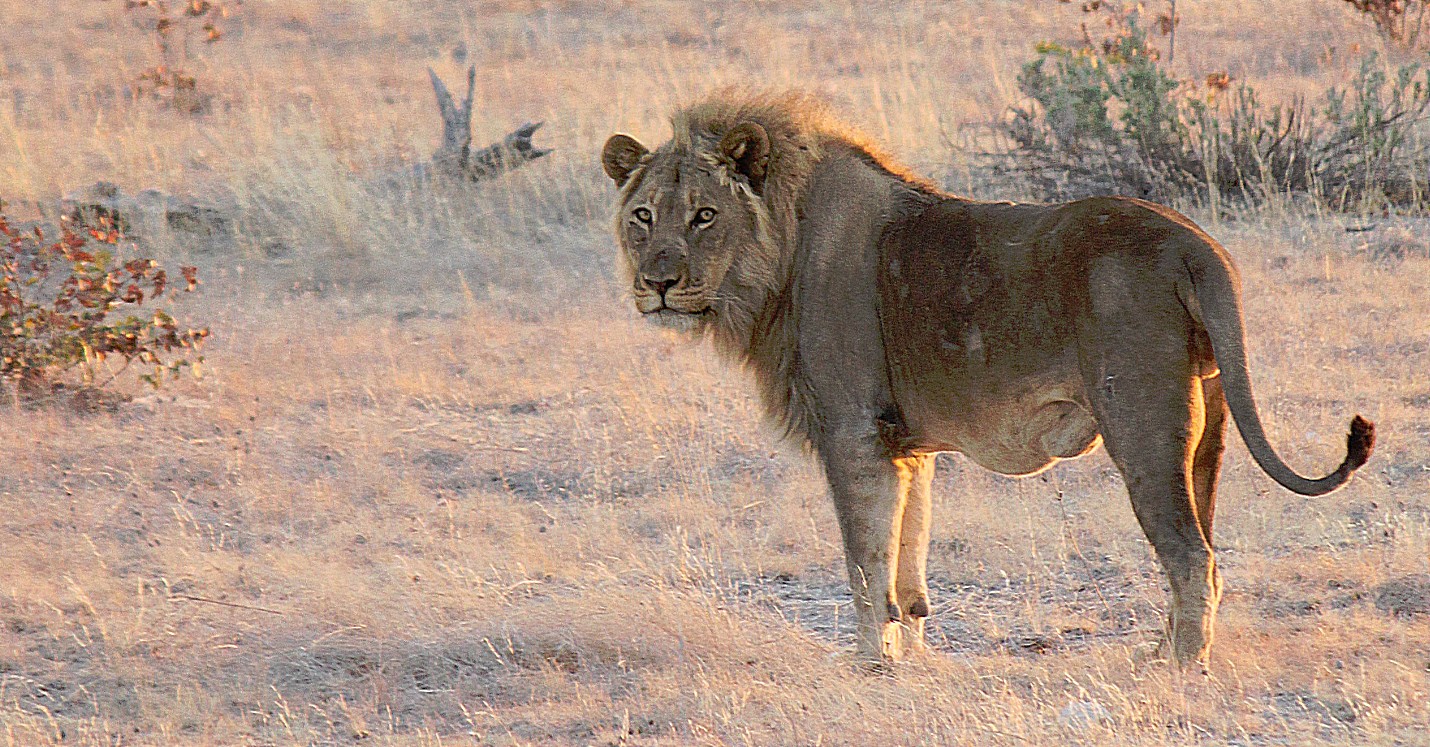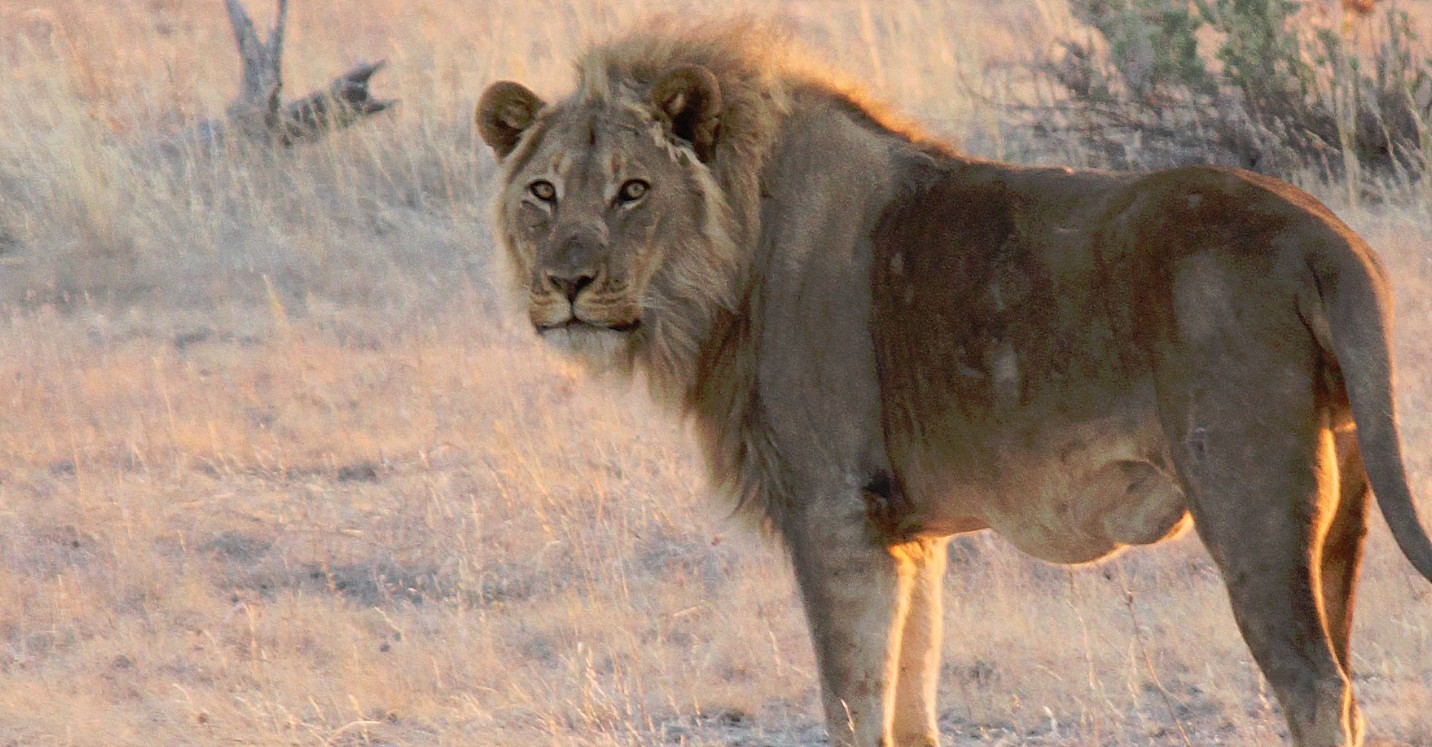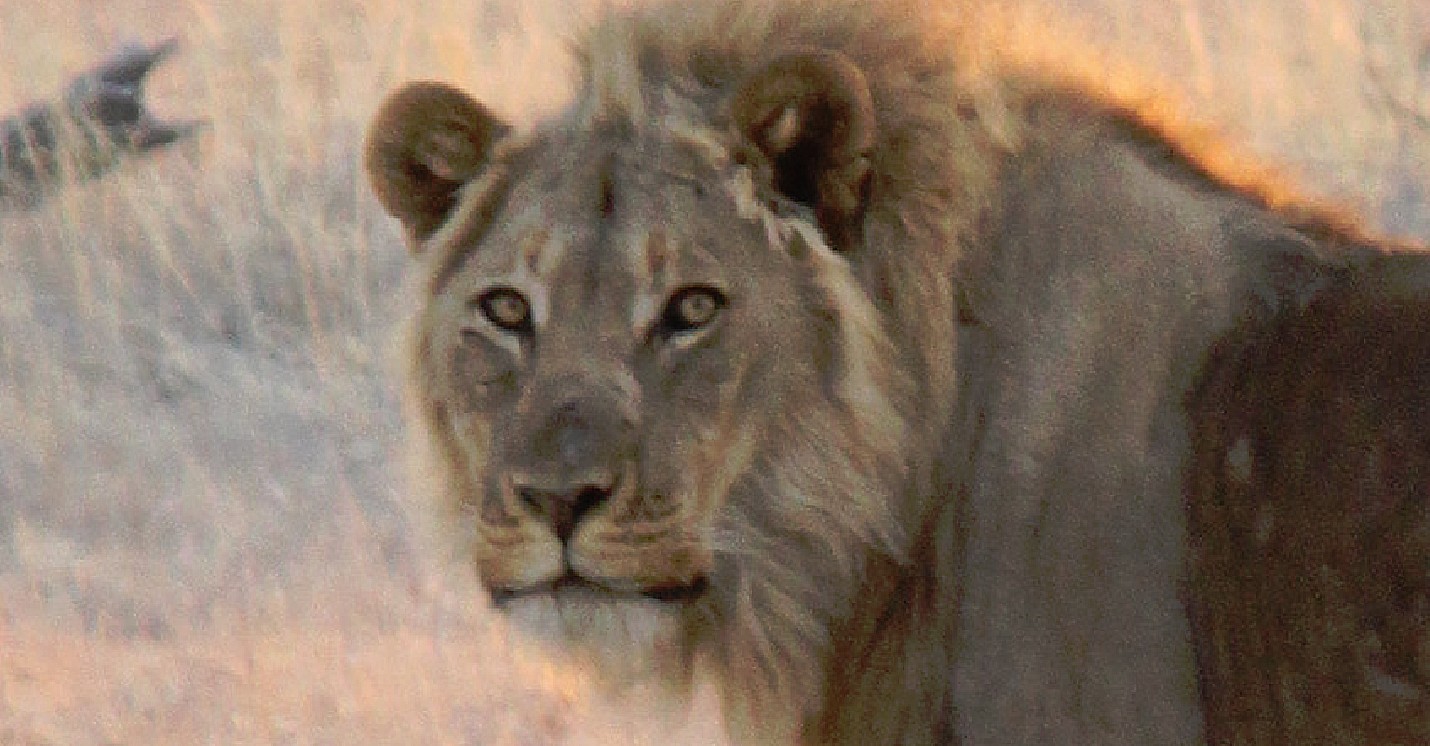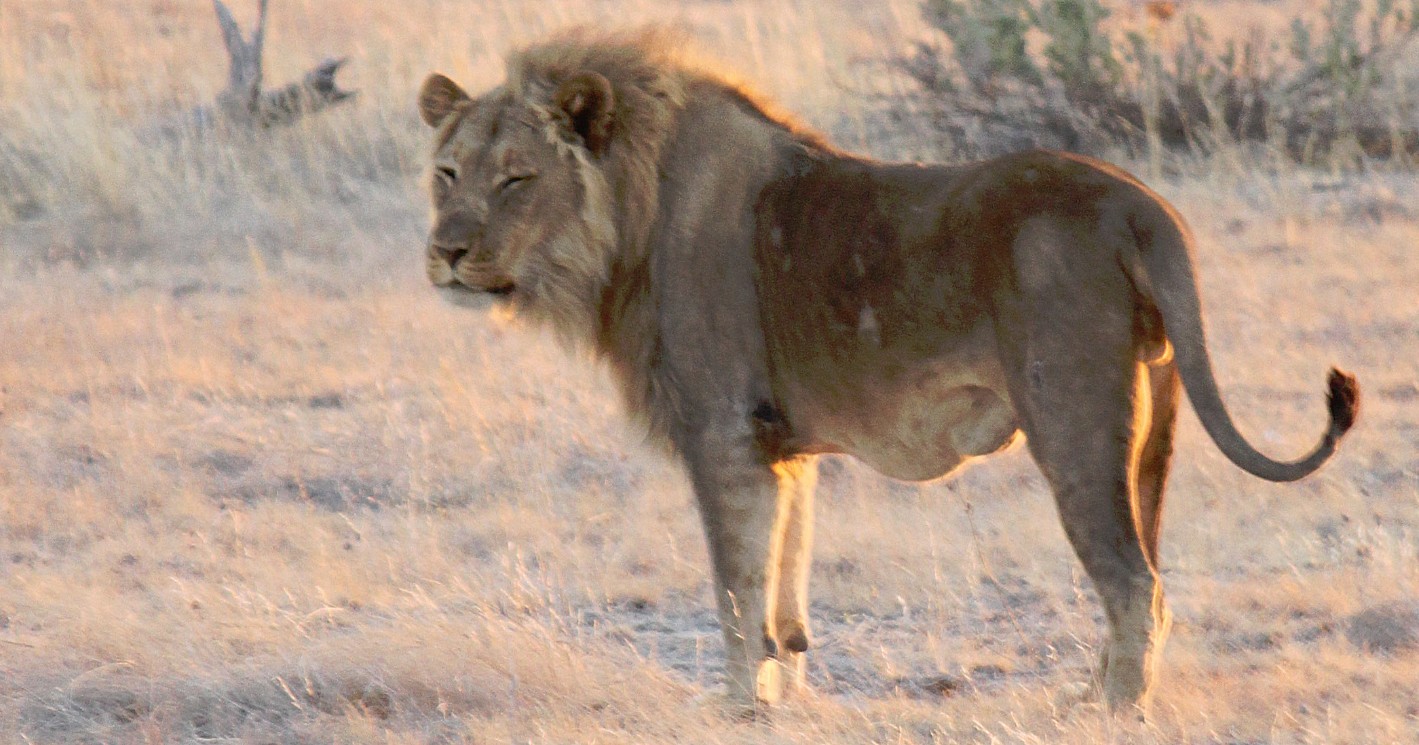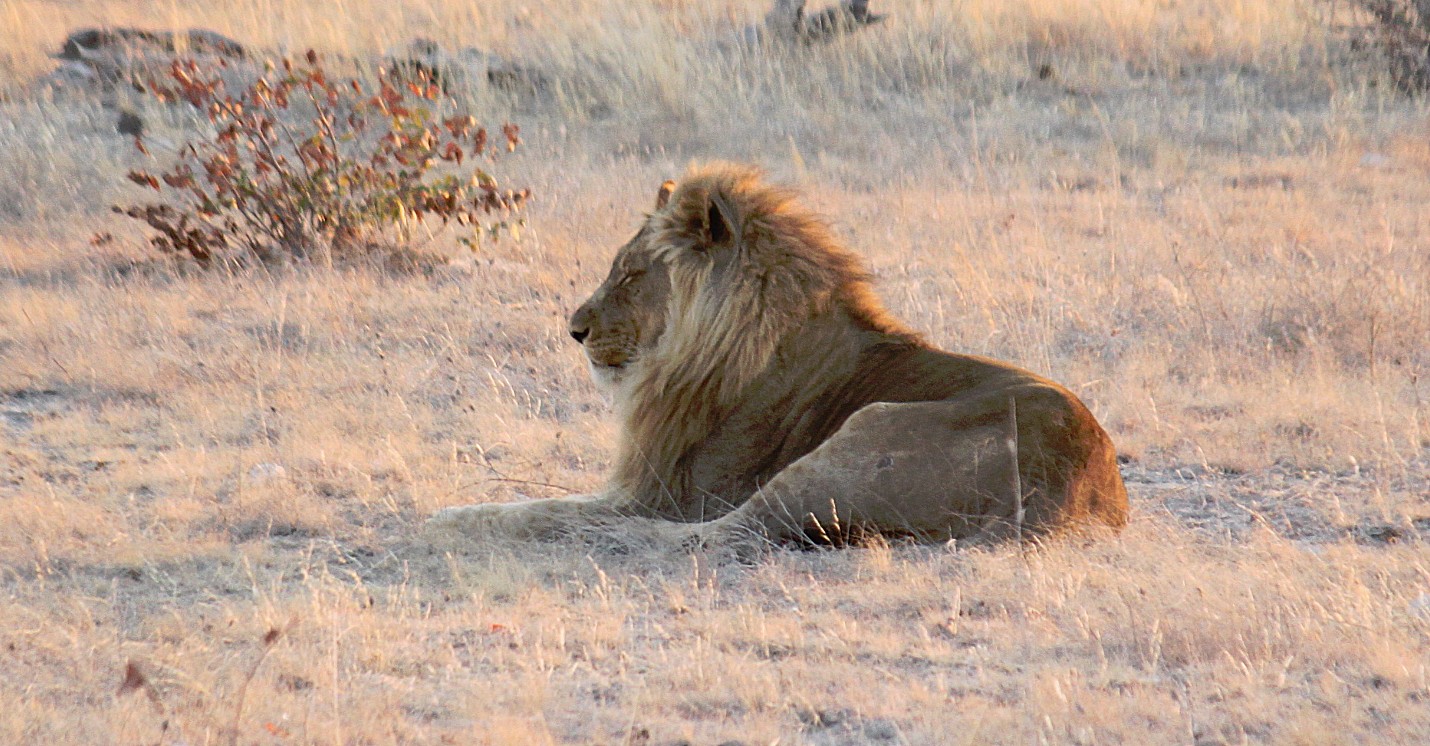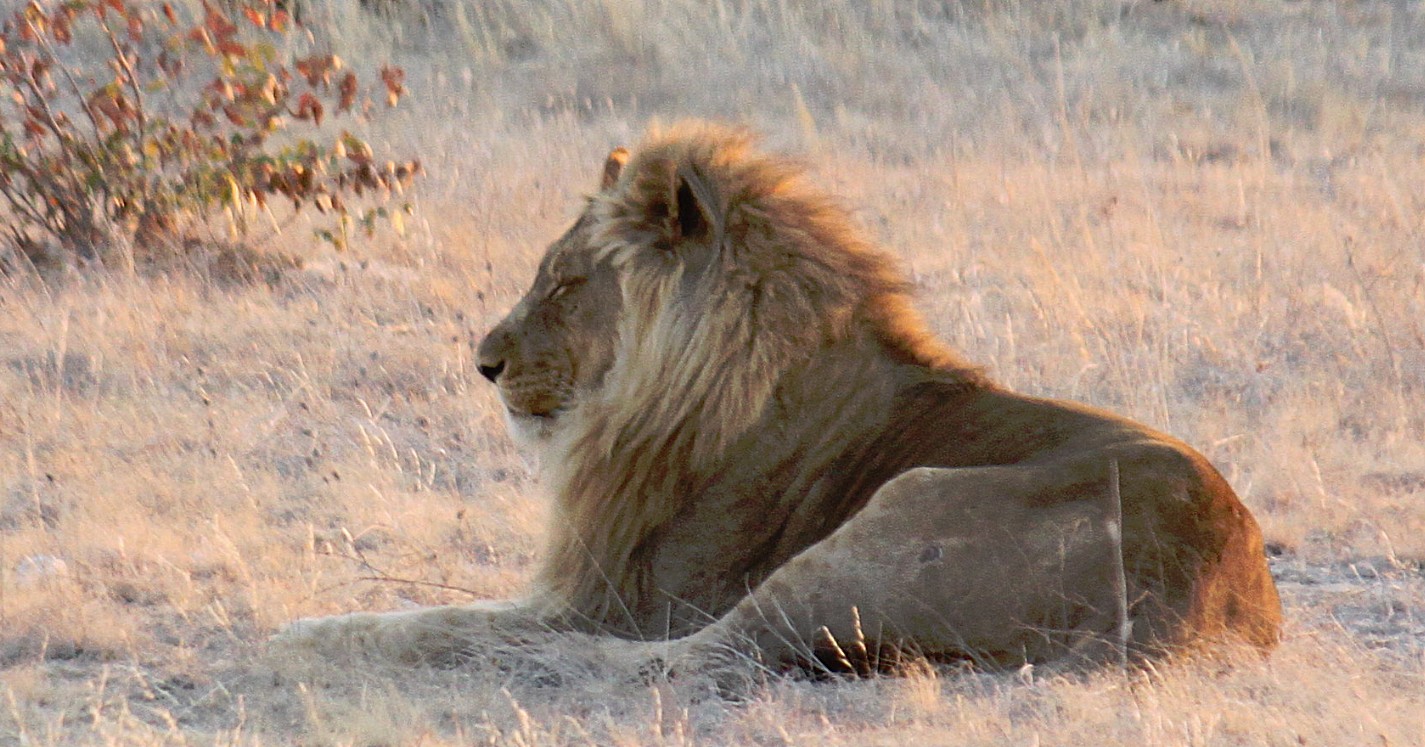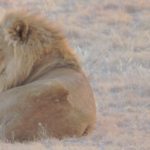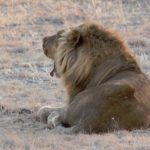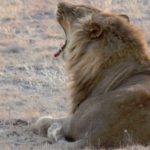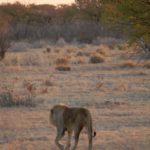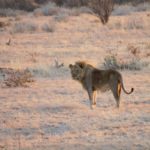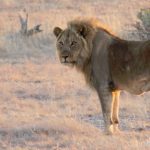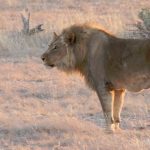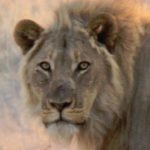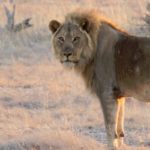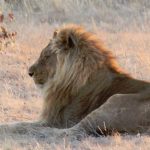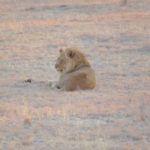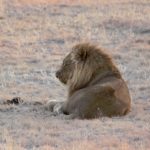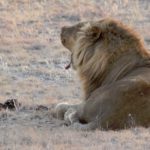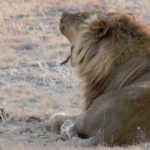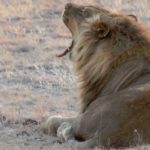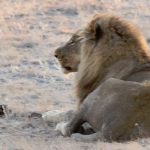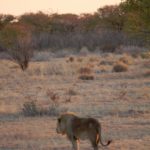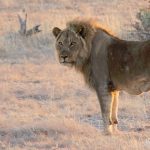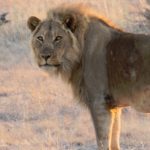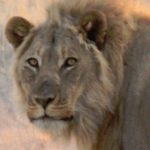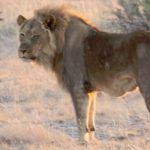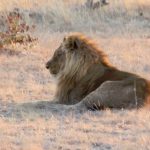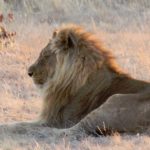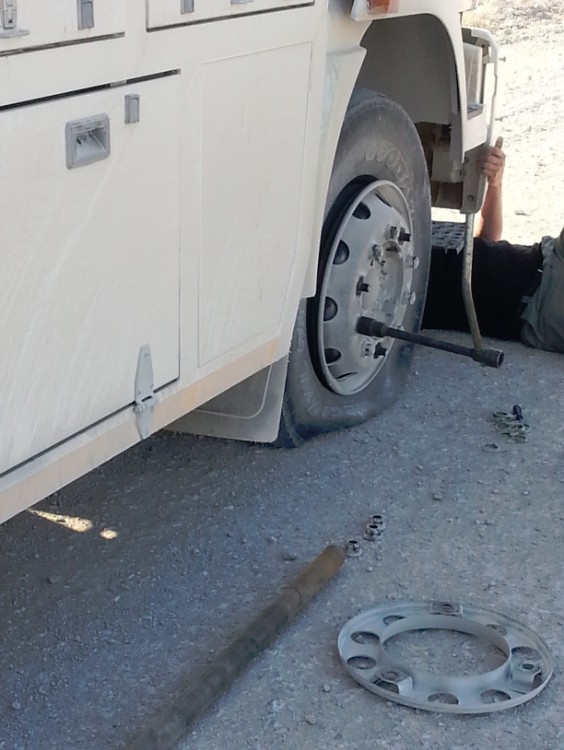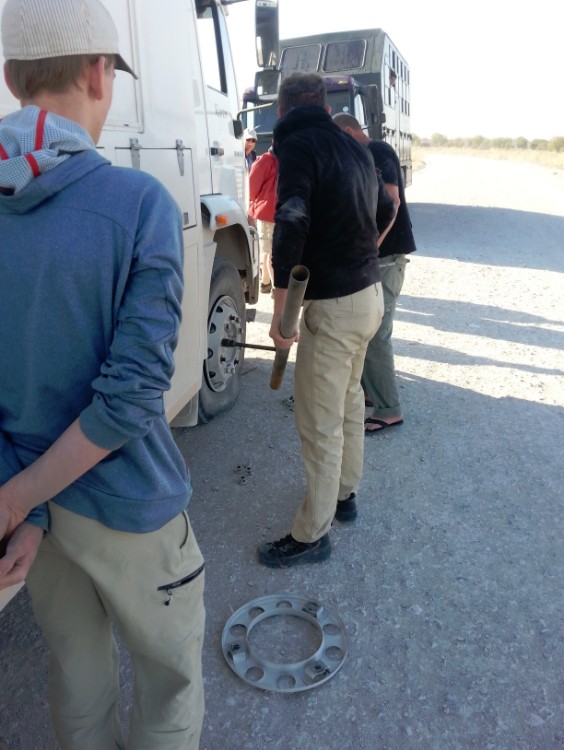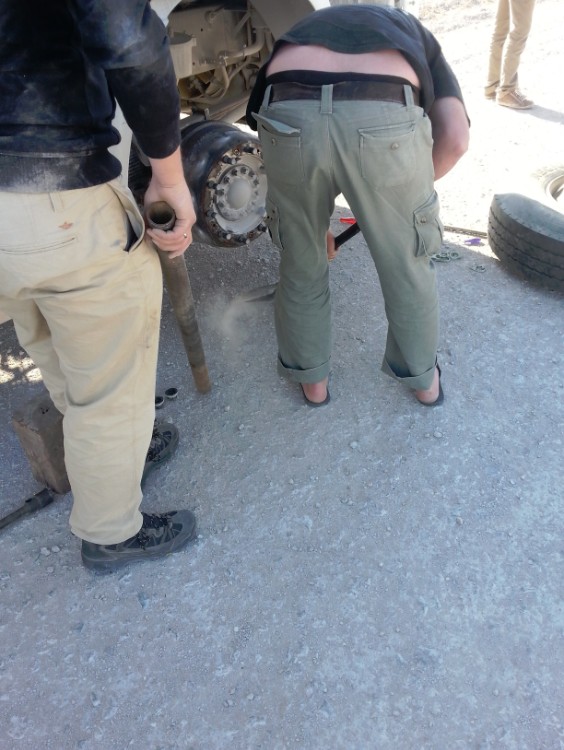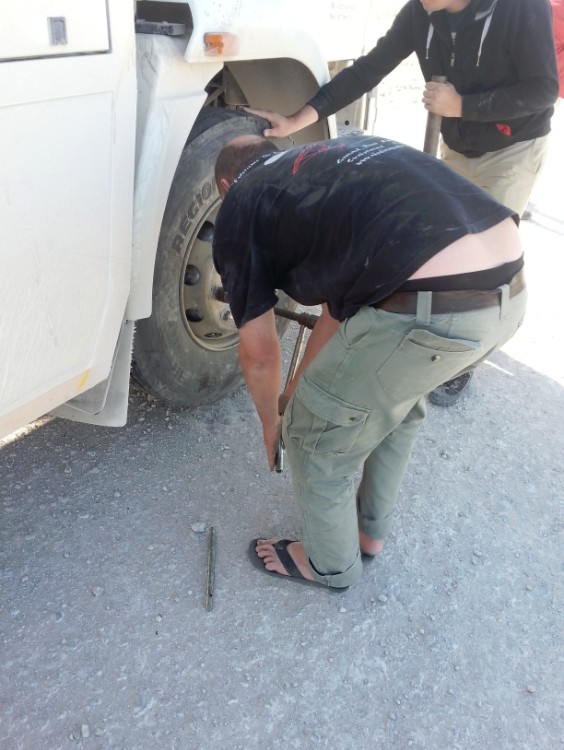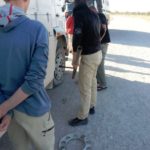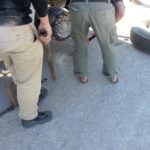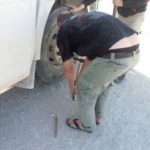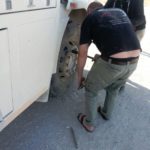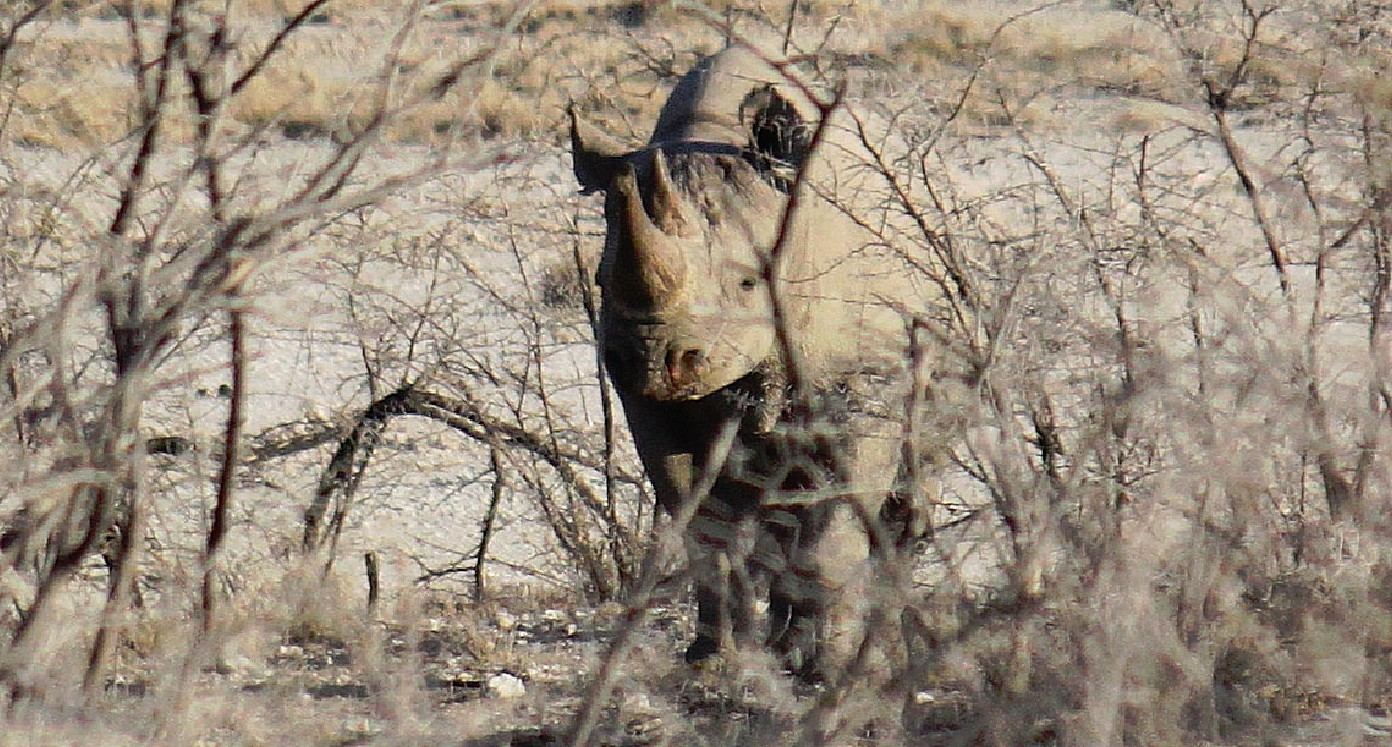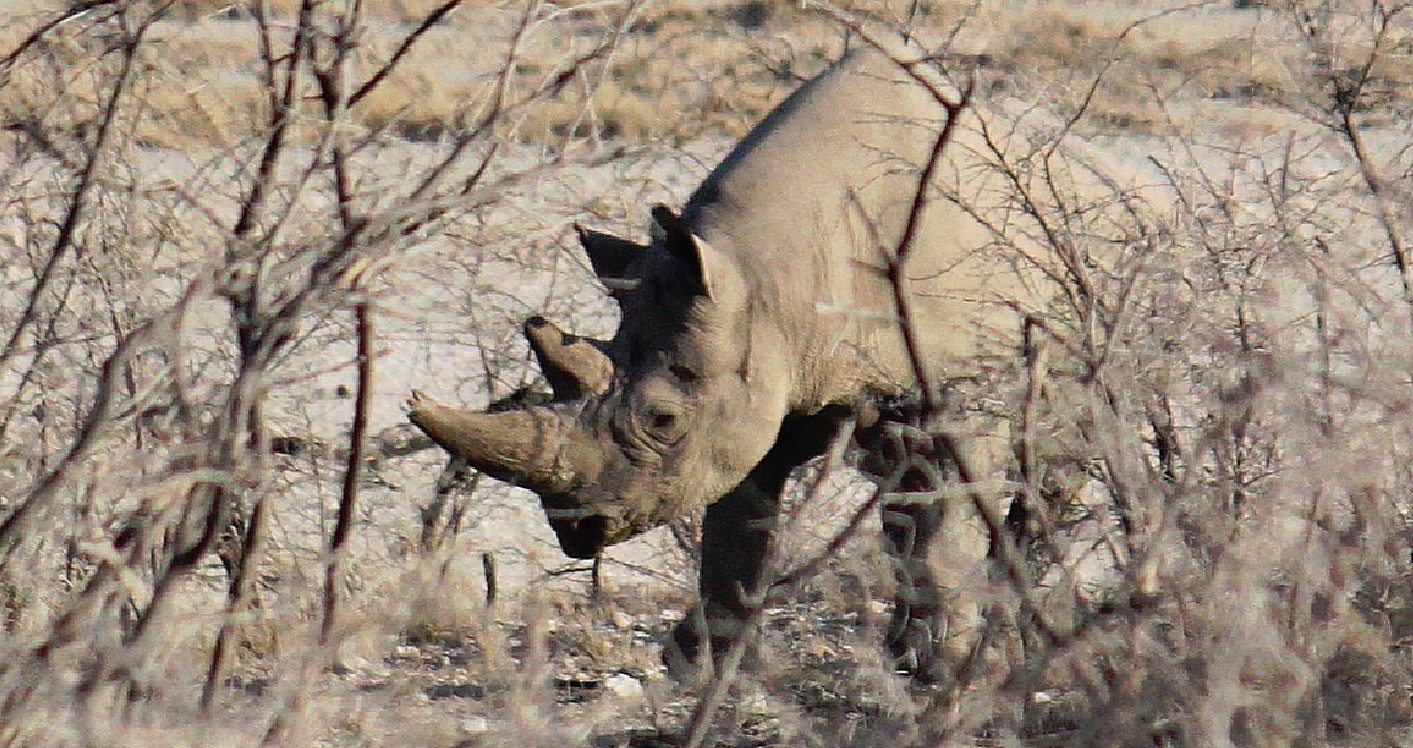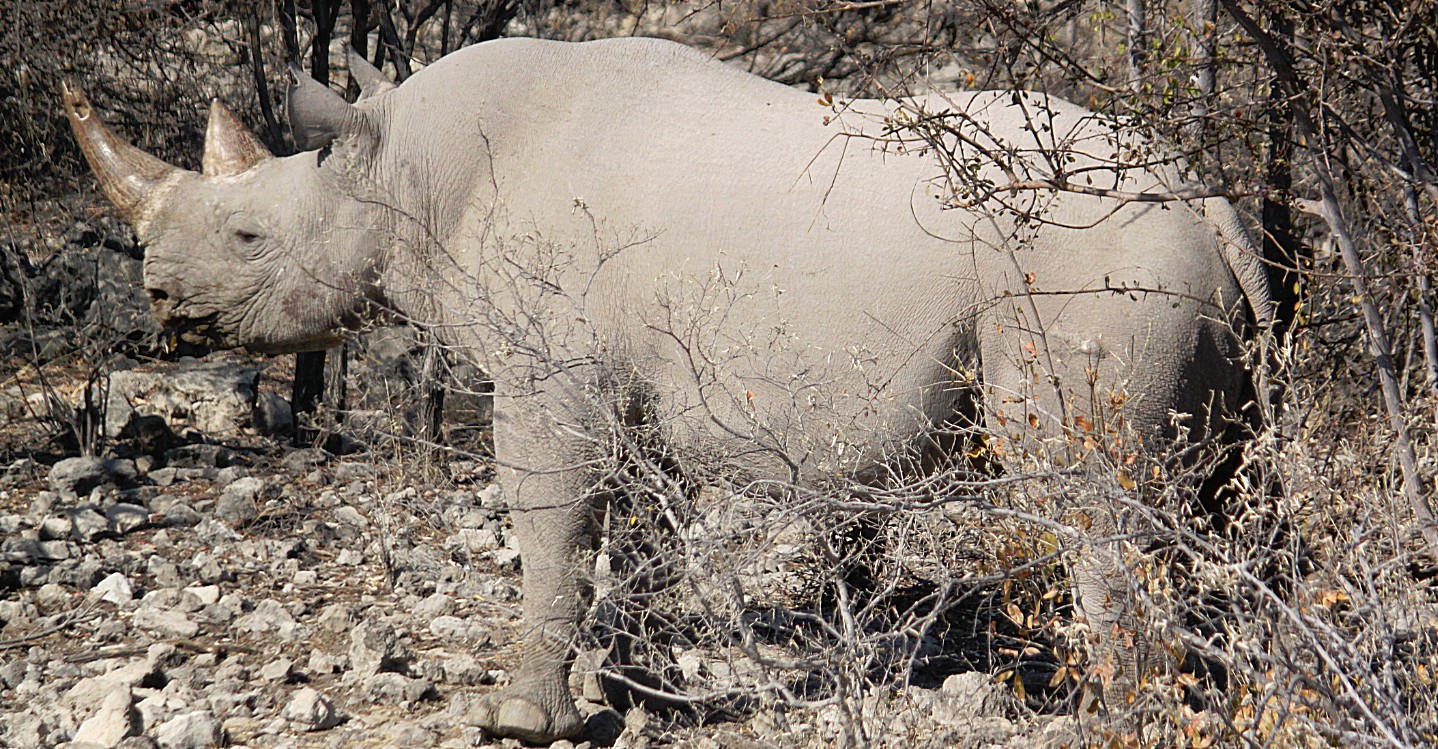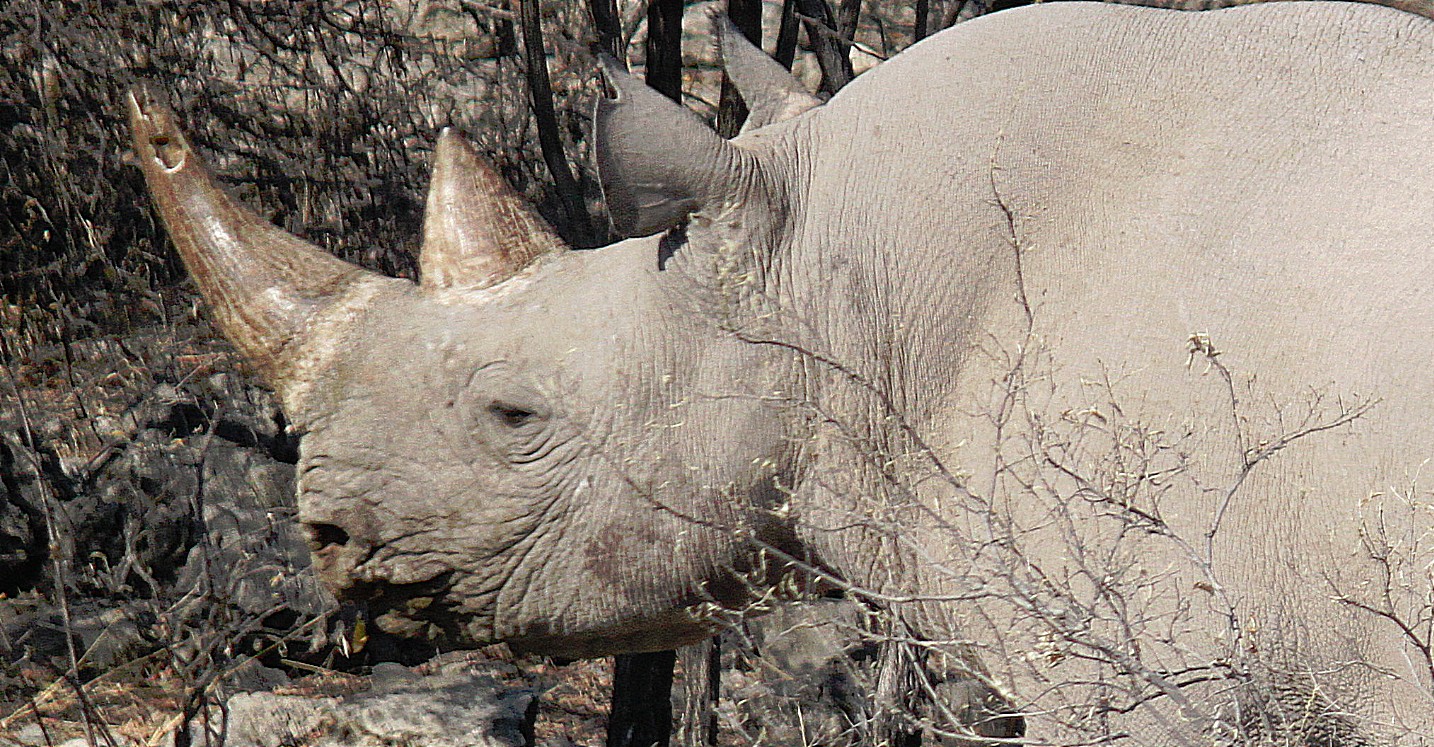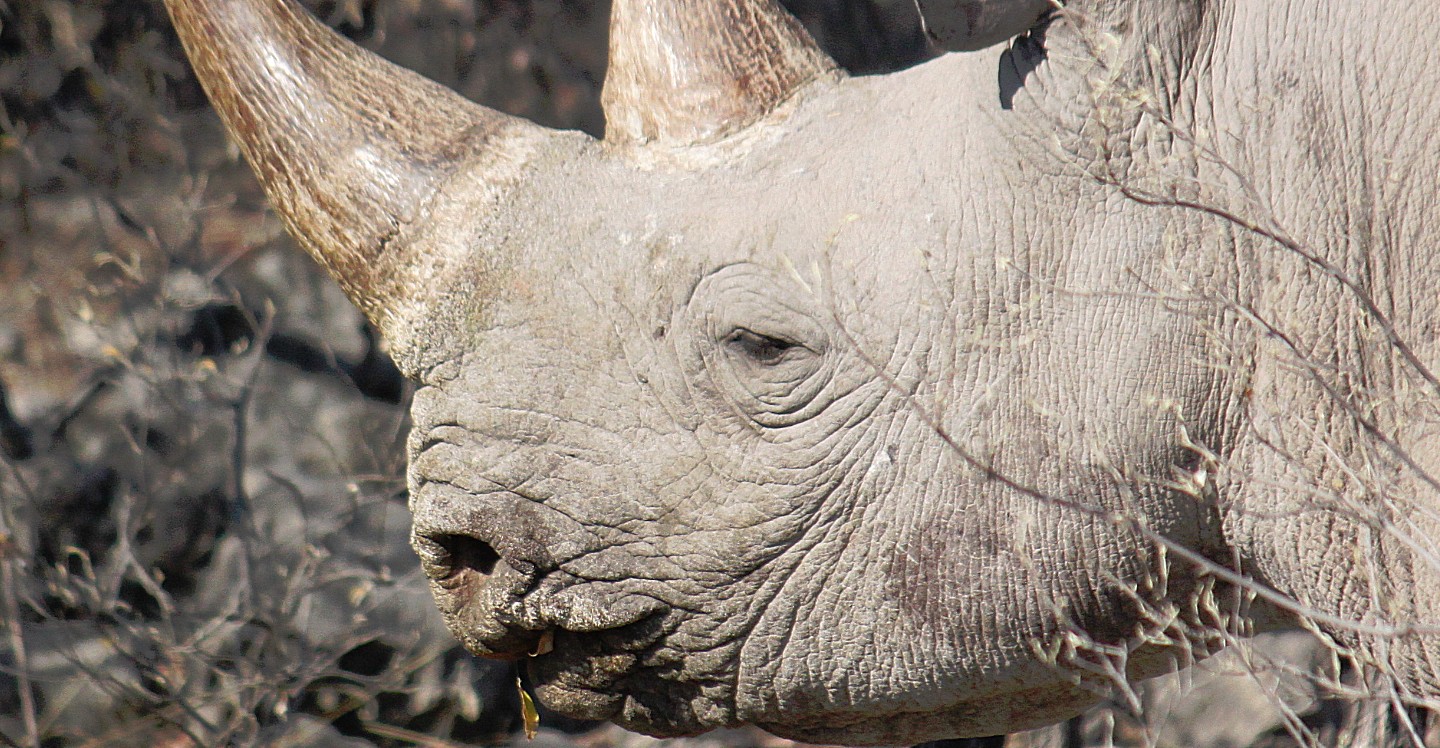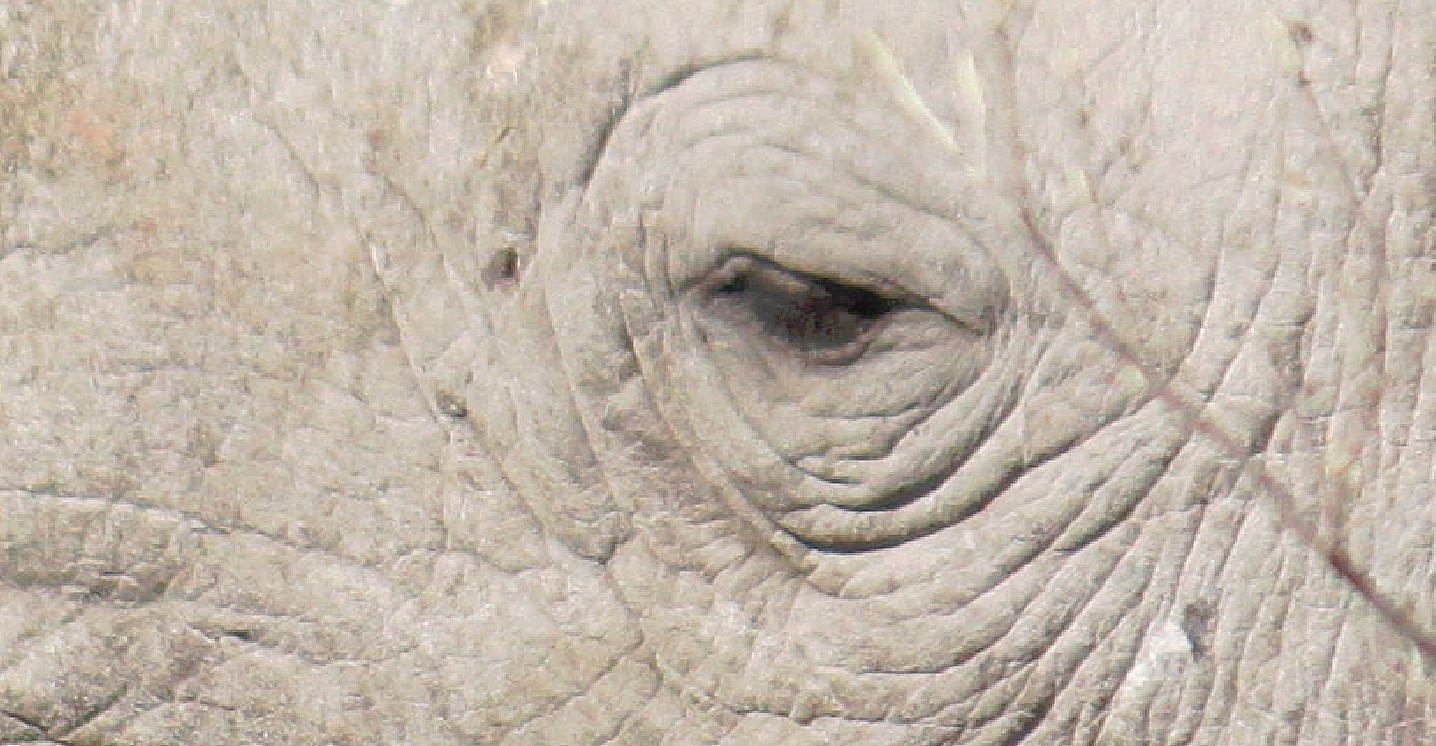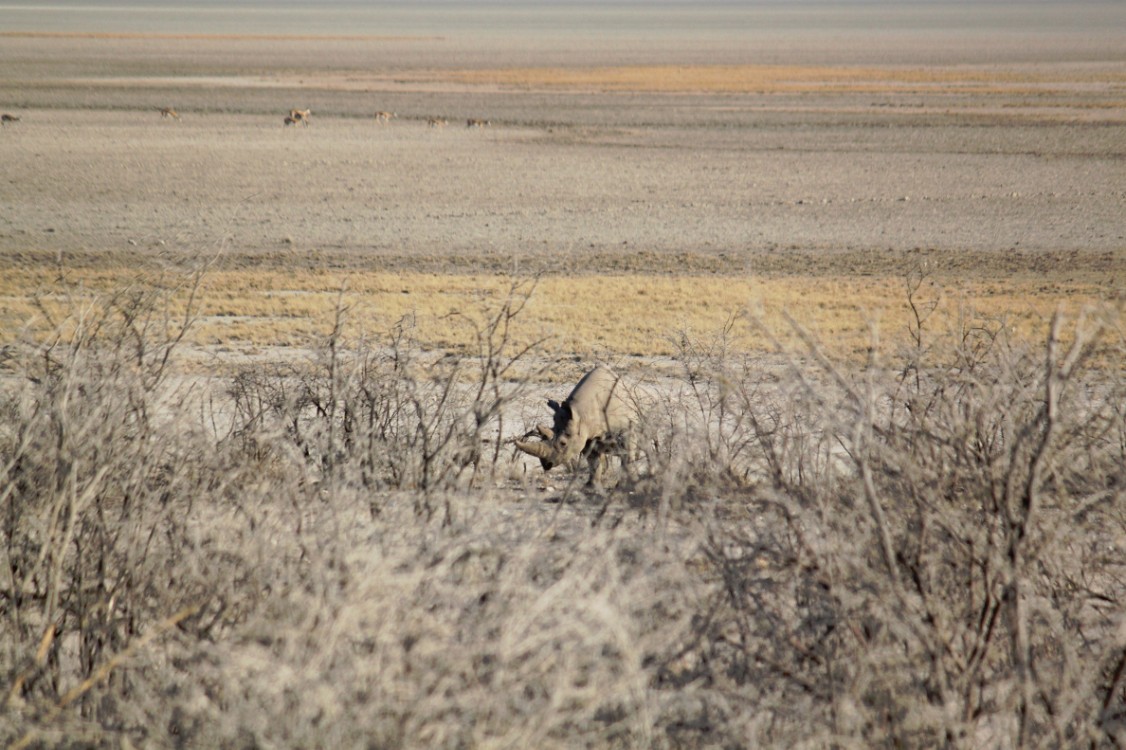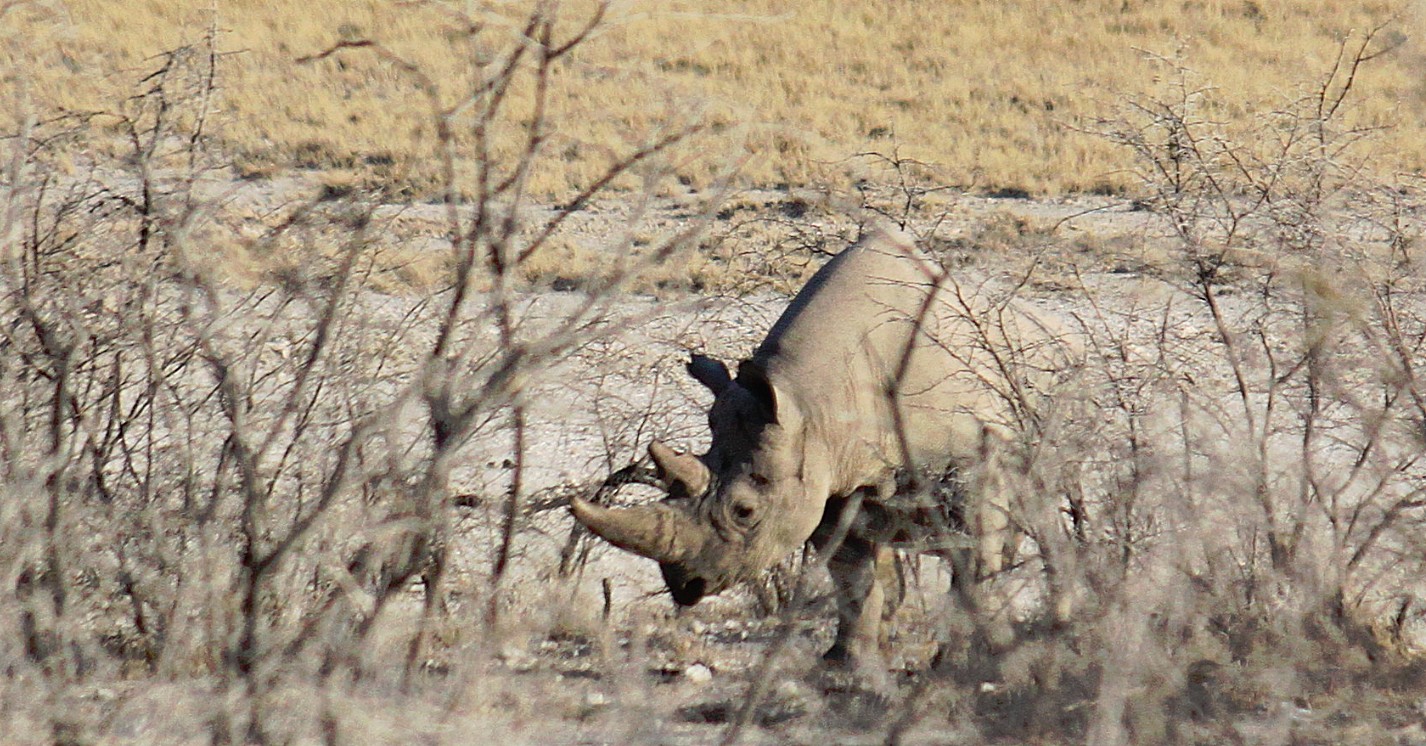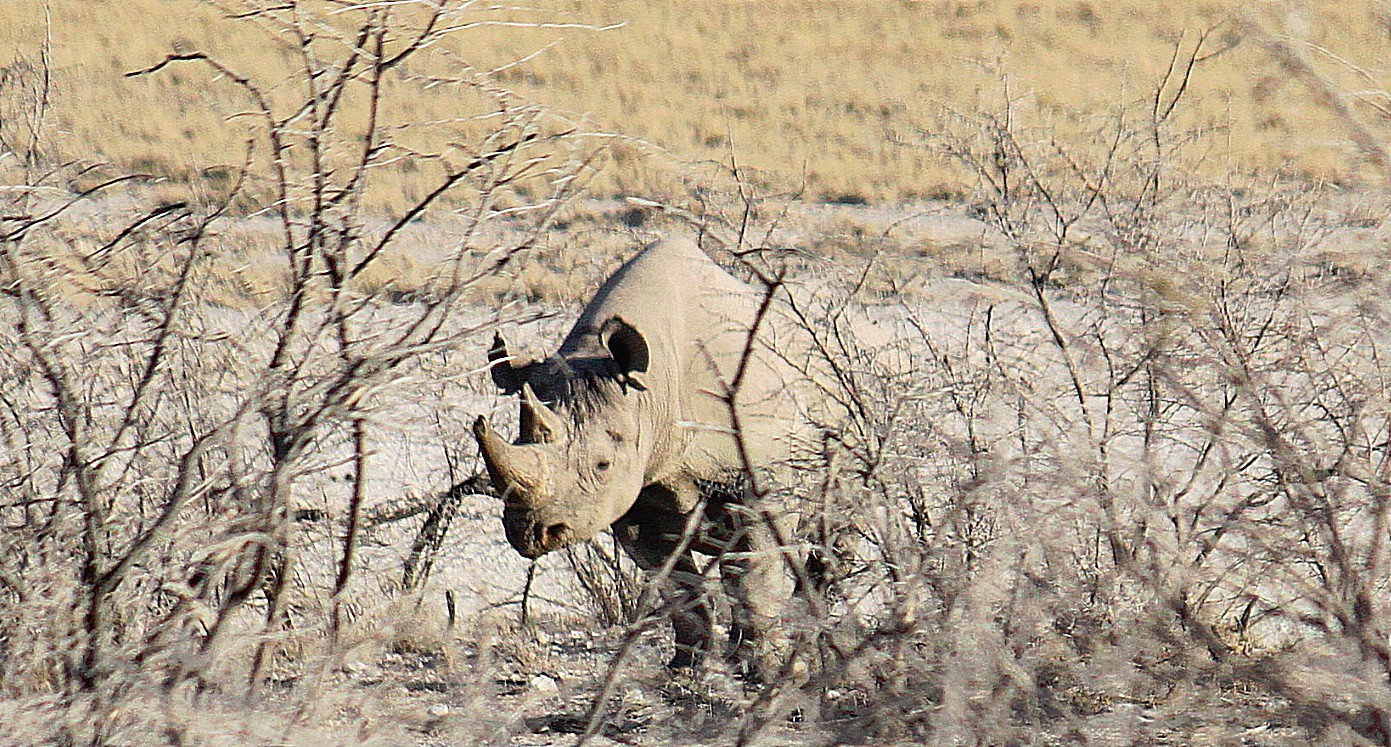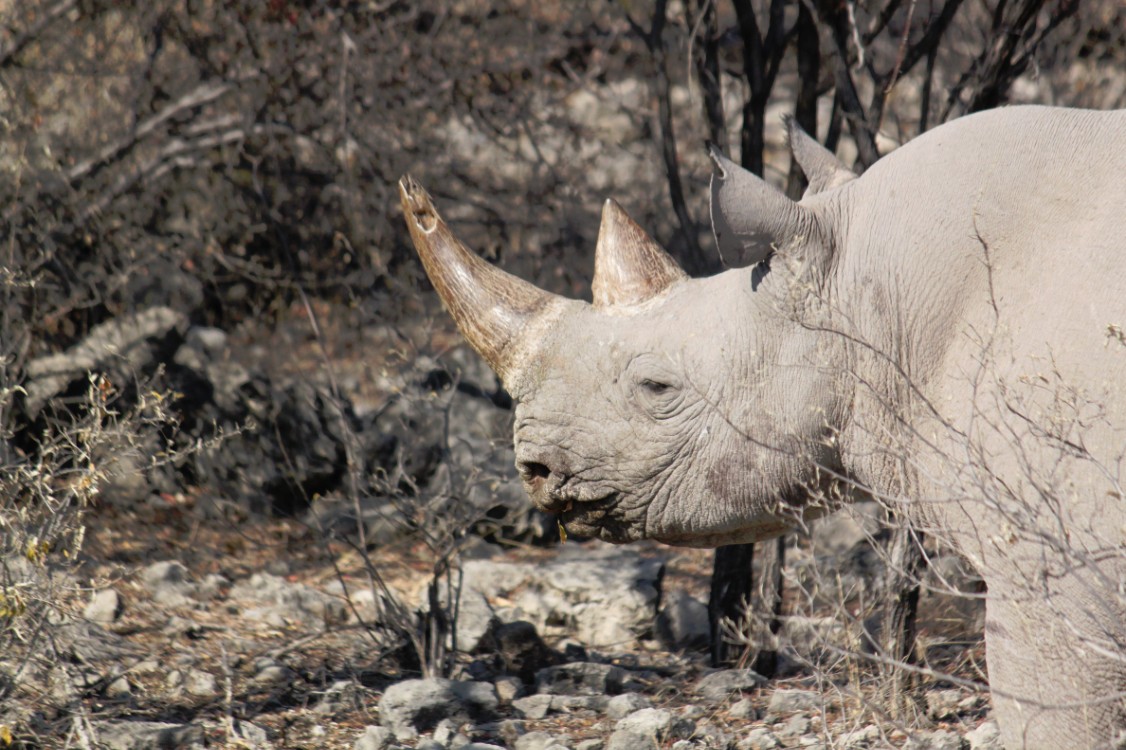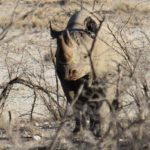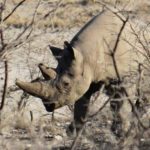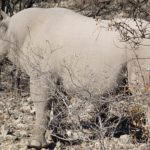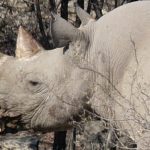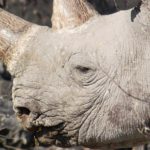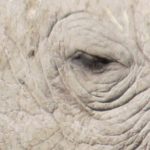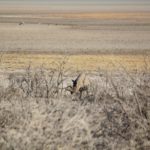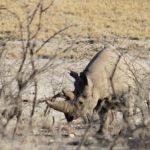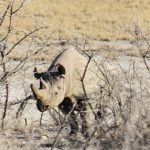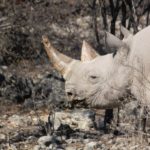11f. Namibia: Etosha National Park (Day 3 of 3) An uneasy adventure… – 2015
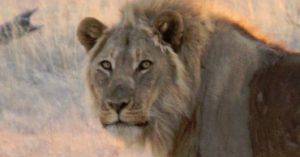 This was the last day in Etosha and after an early morning safari through the park, there was a very long drive a head through the Kavango region to Namibias northern border with Angola towards the Caprivi corridor about which I’ll tell more in the next blog. This would be the longest journey of the entire southern african adventure and that’s why we started early, just before sunrise. It was vital to not linger too long in Etosha so we would reach Bagani before dark. After dark, the roads in northern Namibi would be quite dangerous because of donkeys and people walking on the road and not being very visible for cars.
This was the last day in Etosha and after an early morning safari through the park, there was a very long drive a head through the Kavango region to Namibias northern border with Angola towards the Caprivi corridor about which I’ll tell more in the next blog. This would be the longest journey of the entire southern african adventure and that’s why we started early, just before sunrise. It was vital to not linger too long in Etosha so we would reach Bagani before dark. After dark, the roads in northern Namibi would be quite dangerous because of donkeys and people walking on the road and not being very visible for cars.
This really was the last opportunity to shoot some of the great animals living in Etosha and it would become a morning to remember…
After driving for about an hour the sky started to get lighter and just before sunrise one of the most memorable encounters happened. A bit from the road, a male lion was resting after a night hunting for prey. Everything about this animal breaths royalty and the sunlight, just starting to cross the horizon added a lot to the beauty captured on photo…
Lion
The lion (Panthera leo) is one of the big cats in the genus Panthera and a member of the family Felidae. The commonly used term African lion collectively denotes the several subspecies found in Africa. With some males exceeding 250 kg (550 lb) in weight, it is the second-largest living cat after the tiger. Wild lions currently exist in sub-Saharan Africa and in India (where an endangered remnant population resides in Gir Forest National Park). In ancient historic times, their range was in most of Africa, including North Africa, and across Eurasia from Greece and southeastern Europe to India. In the late Pleistocene, about 10,000 years ago, the lion was the most widespread large land mammal after humans: Panthera leo spelaea lived in northern and western Europe and Panthera leo atrox lived in the Americas from the Yukon to Peru. The lion is classified as a vulnerable species by the IUCN, having seen a major population decline in its African range of 30–50% per two decades during the second half of the twentieth century. Lion populations are untenable outside designated reserves and national parks. Although the cause of the decline is not fully understood, habitat loss and conflicts with humans are the greatest causes of concern. Within Africa, the West African lion population is particularly endangered.
In the wild, males seldom live longer than 10 to 14 years, as injuries sustained from continual fighting with rival males greatly reduce their longevity. In captivity they can live more than 20 years. They typically inhabit savanna and grassland, although they may take to bush and forest. Lions are unusually social compared to other cats. A pride of lions consists of related females and offspring and a small number of adult males. Groups of female lions typically hunt together, preying mostly on large ungulates. Lions are apex and keystone predators, although they are also expert scavengers obtaining over 50 percent of their food by scavenging as opportunity allows. While lions do not typically hunt humans, some have. Sleeping mainly during the day, lions are active primarily at night (nocturnal), although sometimes at twilight (crepuscular).
Highly distinctive, the male lion is easily recognised by its mane, and its face is one of the most widely recognised animal symbols in human culture. Depictions have existed from the Upper Paleolithic period, with carvings and paintings from the Lascaux and Chauvet Caves in France dated to 17,000 years ago, through virtually all ancient and medieval cultures where they once occurred. It has been extensively depicted in sculptures, in paintings, on national flags, and in contemporary films and literature. Lions have been kept in menageries since the time of the Roman Empire, and have been a key species sought for exhibition in zoos over the world since the late eighteenth century. Zoos are cooperating worldwide in breeding programs for the endangered Asiatic subspecies.
After spending a long time in the vicinity of such a regal creature, we drove on towards the east gate of Etosha, still quite well on scedule to reach our end destination before dark.
The only two animals that I really wanted to see before leaving Etosha were a leopard (the only animal of the big five which I never saw in the wild (at Hammerstein doesn’t count) and a rhino in close-up. I had seen rhinos before but only from a great distance (e.g. in Kenya and Tanzania). I Etosha I had seen one rhino lying lazy under a tree. Not very inspiring and a rhino mother and young at the Halali waterhole at night, but that was it. Even when we drove the Rhino trail near Halali, we didn’t see any rhinos.
Than suddenly the truck swayed a bit and our driver stopped the truck and went out to look at the tires. When he returned, his face had colored gray and his expression spelt “Thunderstorm”… It seemed we had a completely flat right front tire and it had to be replaced quickly because of our tight time schedule to reach Bagani where we would spent the night.
But we were in the middle of Etosha and our driver instructed us to post at all edges of the truck and scan the land for wild animals like hyenas, lions, elephants or … rhinos. Somehow I suddenly didn’t want to see a rhino or a leopard anymore. Somehow I just wanted the changing tire to go smoothly and to return in the safety of the truck.
But things didn’t go smoothly at all, because we didn’t have hydraulic tools to remove the bolts of the tire and this became quite strenuous to achieve. Another thing was that there was no place to safely put the jack. Because of that an improvised jack was created from some stone rubble found on the road. Imagine someone lying underneath a truck which balanced on some stones, replacing a tire.
After finally removing the flat tire and replacing it with the spare and attaching the bolts just by using manpower, we could finally proceed towards the east gate of Etosha.
And now we speeded towards the gate to make up for the lost time… The truck started and drove around a corner in the road and there I saw it…
A Rhino…
A rhinoceros (/raɪˈnɒsərəs/, meaning “nose horn”), often abbreviated to rhino, is one of any five extant species of odd-toed ungulates in the family Rhinocerotidae, as well as any of the numerous extinct species. Two of these extant species are native to Africa and three to Southern Asia.
Members of the rhinoceros family are characterized by their large size (they are some of the largest remaining megafauna, with all of the species able to reach one tonne or more in weight); as well as by an herbivorous diet; a thick protective skin, 1.5–5 cm thick, formed from layers of collagen positioned in a lattice structure; relatively small brains for mammals this size (400–600 g); and a large horn. They generally eat leafy material, although their ability to ferment food in their hindgut allows them to subsist on more fibrous plant matter, if necessary. Unlike other perissodactyls, the two African species of rhinoceros lack teeth at the front of their mouths, relying instead on their lips to pluck food.
Rhinoceros are killed by humans for their horns, which are bought and sold on the black market, and which are used by some cultures for ornamental or traditional medicinal purposes. East Asia, specifically Vietnam, is the largest market for rhino horns. By weight, rhino horns cost as much as gold on the black market. People grind up the horns and then consume them believing the dust has therapeutic properties. The horns are made of keratin, the same type of protein that makes up hair and fingernails. Both African species and the Sumatran rhinoceros have two horns, while the Indian and Javan rhinoceros have a single horn.
The IUCN Red List identifies three of the species as critically endangered.
This was actually a black rhinoceros as opposed to a white rhinoceros who’s name has nothing to do with color but with a wide mouth of a grazer. The black rhinoceros has a beak shaped mouth which it uses to pick and eat leaves from scrubs. Both species have identical color and wide was erronuously interpreted as white.
A similar mistake caused a Belgian beer type to be named Witbier (White beer). This name was taken from a similar beer type from German origin named Weizenbeer (Wheat beer) where Weizen (Wheat) was by mistake interpreted as Weiss (White) and thus translated to Wit (Dutch White).
Was that an adventure or not!
After this uneasy encounter we drove towards the east gate of Etosha and left the National Park…

